Blog » How to Guides » Enneagram The Ultimate Guide
Enneagram
The Ultimate Guide
Welcome to the ultimate guide on Enneagram!
Recently, there has been a lot of renewed interest in the traditional system of the Enneagram. It has gained popularity in the business management, spirituality, and coaching industries because of the insights it provides.
But what is an Enneagram and how do you use it?
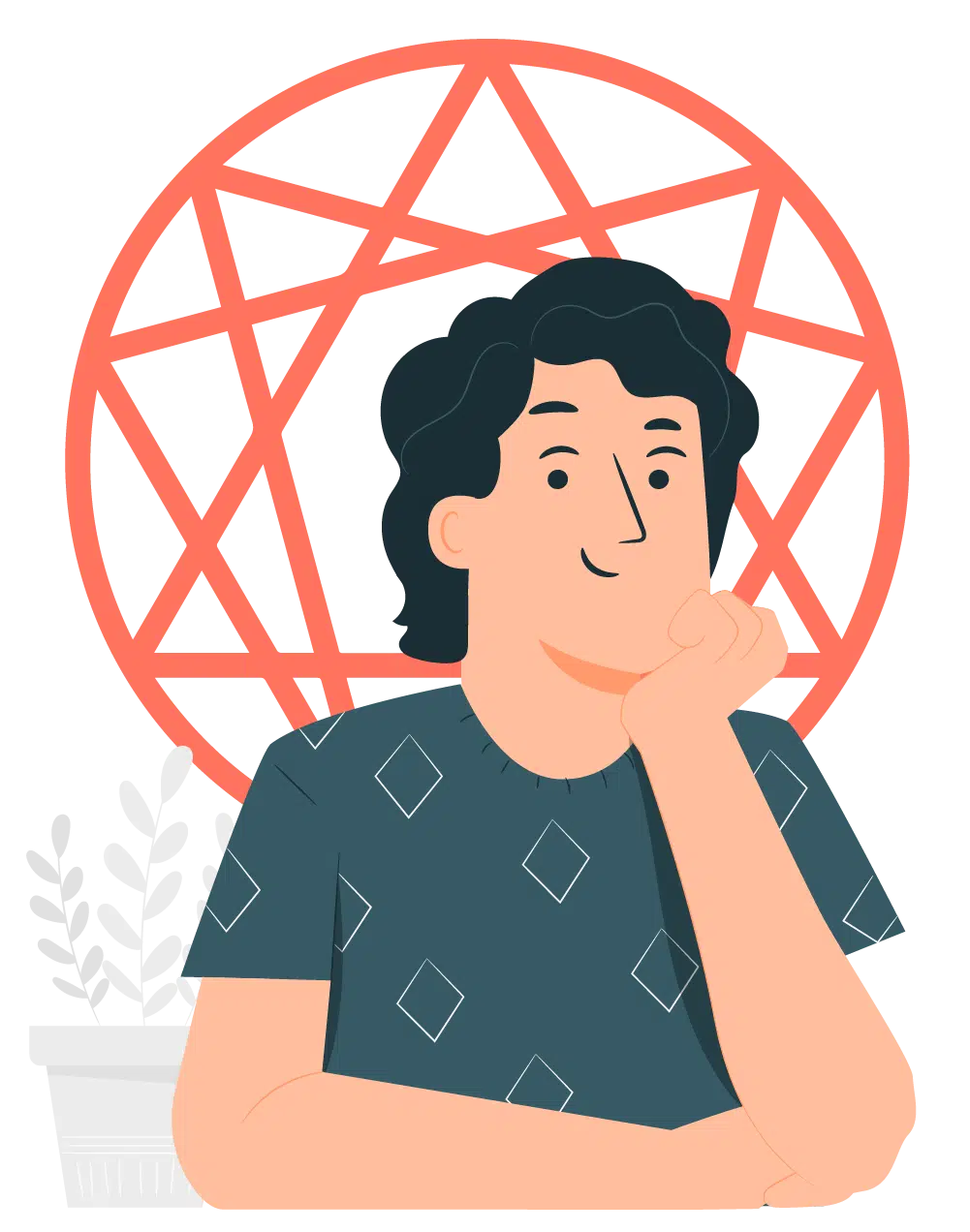
If you are swamped by the amount of information around you and don’t know where to start reading, look no further.
So if you want to:
- Learn about the Enneagram and its personality types
- Learn how to use the Enneagram to understand your clients better
- Guide your clients to better solutions with the help of detailed insights
- Help your clients identify their patterns and improve their lives
Then you’ll love this in-depth guide to understanding the Enneagram.
Let’s get started!
Don’t have time to read the whole guide right now?

No worries. Let me send you a copy so you can read it when it’s convenient for you. Just let me know where to send it (takes 5 seconds)
Yes! Give me my PDFChapter 1
The Fundamentals
In this chapter, I will cover a few of the main aspects of the Enneagram, including its definition, origins, and history.
These fundamentals will help you understand the Enneagram better, and are crucial in learning how to use the tool with your clients in your coaching practice.
Let’s jump right in!

What is the Enneagram?
The Enneagram is a psycho-spiritual model of the human psyche; it is a system of nine interconnected personality types.
People are classified into one of these nine types, also called ‘enneatypes’, based on their inherent personality traits, characteristics, and upbringing.
Each of these nine enneatypes has mental, emotional, and behavioral patterns that guide how a person deals with the world.
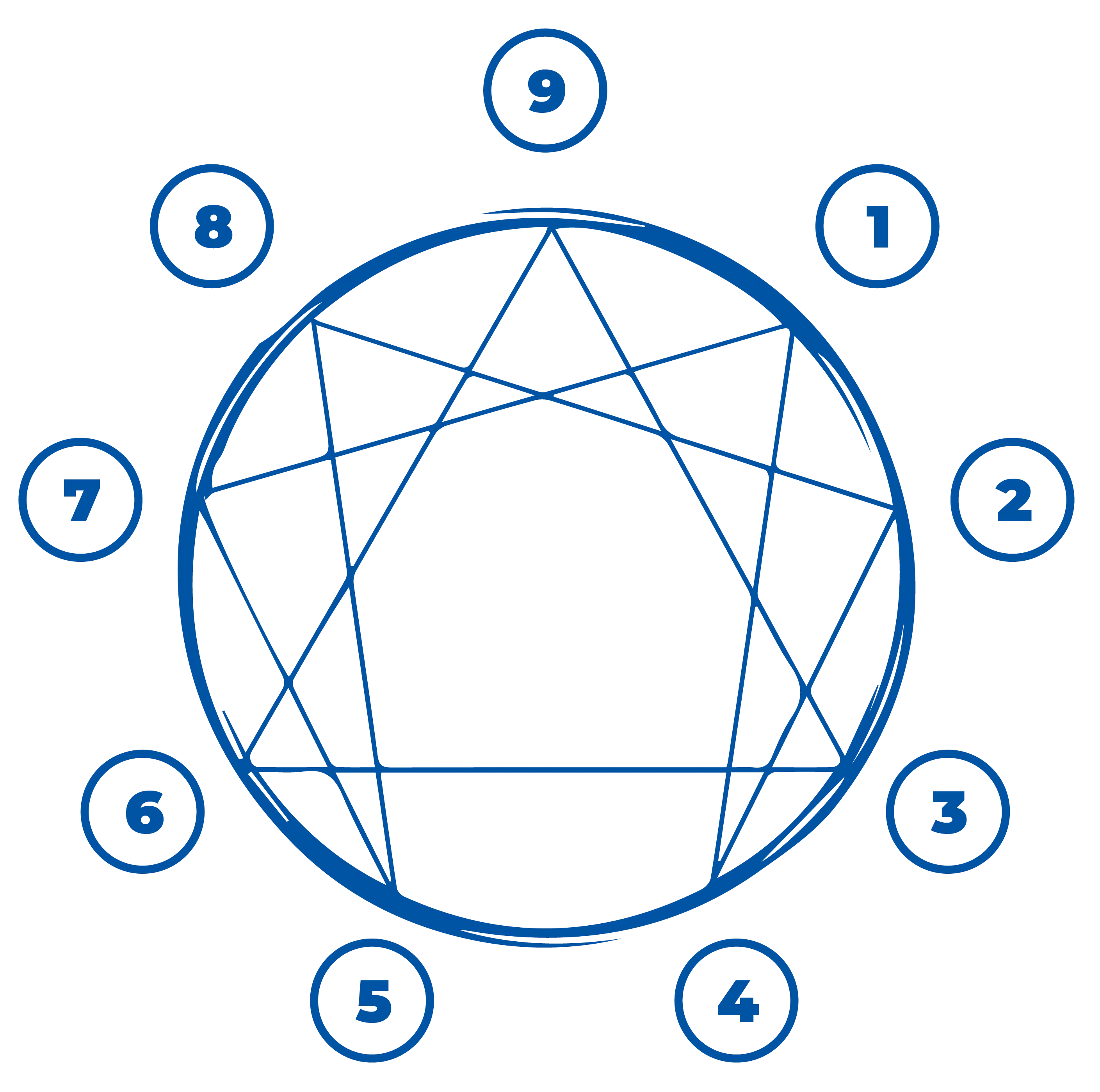
The Enneagram is a powerful self-awareness tool that can help us get to know ourselves better, and change the habits that hold us back from reaching our full potential.
The Enneagram can give us helpful insights about ourselves and the people around us, and guide us on our journeys to self-discovery and growth.
Origins and History of the Enneagram
The Enneagram is made up of two Greek words — ἐννέα [ennéa] meaning “nine” and γράμμα [grámma] meaning something “written” or “drawn” or, simply, a figure.
The exact origin of the Enneagram, however, is a matter of dispute.
Ideas similar to the Enneagram of personality date as far back as the 4th century, but the theories of the modern Enneagram were first developed only in the 1950s
Many names are associated with the development of the modern Enneagram.
George Gurdjieff, a Russian philosopher, is credited with coming up with the name ‘enneagram’ and for popularizing the use of the enneagram figure.
But it is Oscar Ichazo, the Bolivian philosopher, who is widely recognized as being the main source of the modern Enneagram.
He assigned the different personality types to each of the nine positions in the diagram.
Ichazo based the Enneagram on his self-development teachings — mainly those of ego-fixations, holy ideas, passions, and virtues. It formed a part of his larger body of work that he termed ‘Protoanalysis’.
Along with developing the contemporary Enneagram system, Ichazo is also credited for coining the term ‘Enneagram of Personality’.
Claudio Naranjo, one of Ichazo’s students, also played a major role in creating and popularizing the modern Enneagram.
Naranjo further developed and began teaching his own understanding of the Enneagram in the United States in the 1970s.
He integrated Ichazo’s Enneagram with new developments in psychology and defined the nine types in psychological terms.
Don Richard Riso, Russ Hudson, Helen Palmer, Elizabeth Wagele, and Eli Jaxon-Bear also made major contributions to the development and popularization of the Enneagram.
Chapter 2
The Enneagram Model
The Enneagram is a tool that has a lot to offer anyone willing to understand its intricacies.
In this chapter, I will be telling you about the Enneagram figure, the nine personality types, the elements of the Enneagram.

The Enneagram Diagram
The Enneagram is usually drawn as a nine-pointed figure in a circle. Each of the nine points represents one of the nine enneatypes.
These nine points on the circle are also connected with each other by lines drawn inside the circle.
The lines connecting 3-6-9 form an equilateral triangle. The remaining lines connect 1-4-2-8-5-7 and form an irregular hexagonal figure.
Some schools of thought consider the Enneagram to be a full profile of the human personality, with the nine points symbolizing nine sides of the human psyche.
The lines connecting the points on the Enneagram figure represent the interconnectedness of certain personality types.
In some other intellectual traditions, the Enneagram also has a spiritual meaning.
In those, the circle symbolizes unity, the equilateral triangle of 3-6-9 symbolizes the Law of Three, and the irregular hexagonal figure of 1-4-2-8-5-7 symbolizes the Law of Seven.
The nine types are often given corresponding names denoting their characteristic roles, core values, or archetypes.
In the next section, I will go on to describe the nine Enneagram types in detail.
The 9 Enneatypes

The Enneagram is a set of nine personality types, with each number corresponding to one type. When reading each type’s descriptions, it is common to see bits of yourself in each type.
One Enneatype will stand out and seem to best represent you, though. That is your core personality type.
All of us are born with one dominant type that shapes our personality, temperament, and behavior right from our childhood.
As we grow and learn to adapt to our surroundings in different ways, we relate to people around us in our unique ways.
But even after learning these ways to fit into our worlds, our core personality type does not change.
I want to make one thing clear — there is no Enneatype that is better or worse than any other. The number given to each type is arbitrary and does not denote any preferences.
Each type has its unique traits, which can be both good and bad. It is actually the cultural differences across the world that might make one type seem more desirable than the other.
The idea behind studying the Enneatypes is not to change your type, but to bring out the best of your personality type.
Here are the 9 Enneatypes:
Type 1 – The Perfectionist
Also called ‘The Reformer’
Type 1 personalities have strong principles and believe that they need to be good in order to be respected.
Their sense of self-worth comes from knowing that they are acting ethically. They strive for perfection, and are focused on improving themselves and others around them.

Because of their attention to detail and focus on perfection, Type 1 personalities can sometimes be overly critical of themselves. They hate making mistakes, no matter how small.
They can therefore go to great lengths to avoid losing control or showing anger.
While healthy Type 1 personalities are self-disciplined, hardworking, and principled, the unhealthy ones tend to be uptight, controlling, judgemental, and critical of themselves and others.
You can find more information about this type here.
Type 2 – Helper
Also called: The Giver
People with Type 2 personalities are altruistic by nature, and are guided by the need to be appreciated for their selflessness.
This type of personality likes to care for the people around them and can go to great lengths in making others feel special and taken care of.

Out of all 9 Enneatypes, Type 2 personalities are the most friendly, positive and are quick to focus on others’ needs and offer advice or support.
However, due to this tendency — and out of their fear of being seen as needy — they sometimes end up ignoring their own needs.
Healthy Type 2 folks are generally generous, empathic, and nurturing but if unhealthy, they can come across as intrusive, manipulative, and demanding.
You can find detailed information about this type here.
Type 3 – Achiever
Also called: The Performer
People with Type 3 personalities believe in being accomplished and successful to be worthy of love. Their sense of worth is connected to being efficient and productive.
They tend to be achievers and are motivated strongly by their desire to be admired for their achievements.

Type 3 folks are usually image-conscious and hate to be seen as incompetent or as a failure. They are sometimes so focused on external accomplishments that they can lose sight of their true inner self.
When healthy, Type 3 people are industrious, efficient, confident and self-assured, and make really good leaders.
But if unhealthy, they tend to be overly competitive, narcissistic, impatient, and inattentive to their and others’ feelings.
You can find detailed information about this type here.
Type 4 – The Individualist
Also called: The Romantic
Type 4 personalities believe in the inherent beauty and romance of all things.
They are romantic, idealistic, intuitive, and compassionate. They are also strongly motivated by their desire to be authentic about expressing their innermost thoughts in unique and beautiful ways.
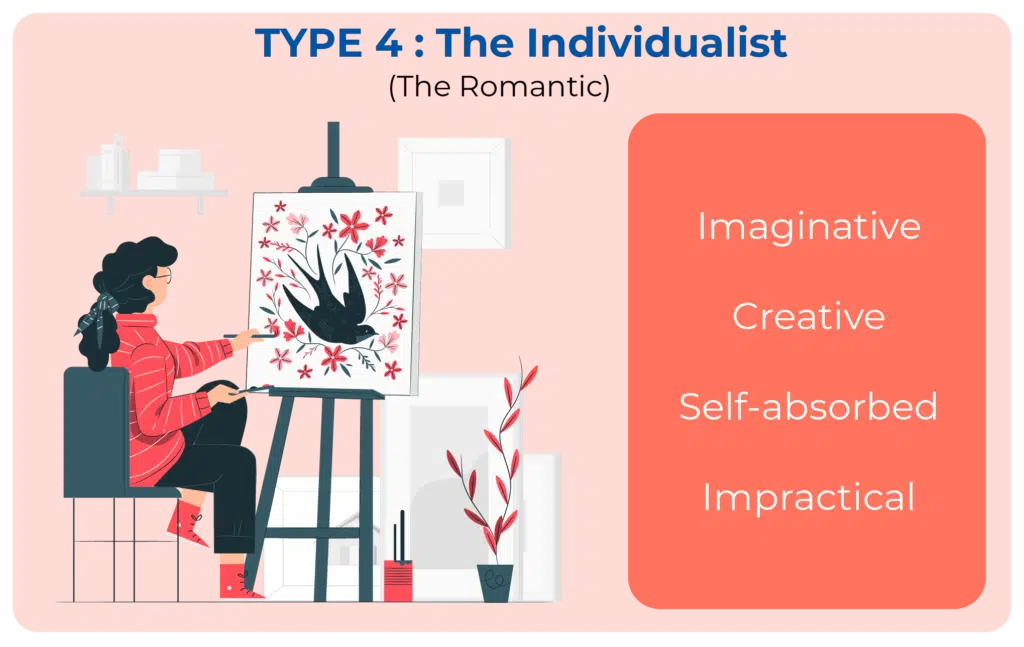
They tend to focus on what they feel is missing from their lives, and are driven by a need to reach this mysterious goal.
However, in their desire to be special, Type 4 folks can feel lonely and estranged from others. Their desire to find out the missing piece in their lives can lead to them becoming melancholy and depressed.
Healthy Type 4 people are creative, imaginative, and self-aware. But if unhealthy, they tend to be self-absorbed, moody, dramatic, and impractical.
You can find detailed information about this type here.
Type 5 – Investigator
Also called: The Observer
Type 5 personalities believe in being self-sufficient, independent, and in guarding their space.
Their sense of worth comes from carefully analyzing everything and accumulating knowledge. Type 5 folks are rarely influenced by social pressure and have a strong sense of self.
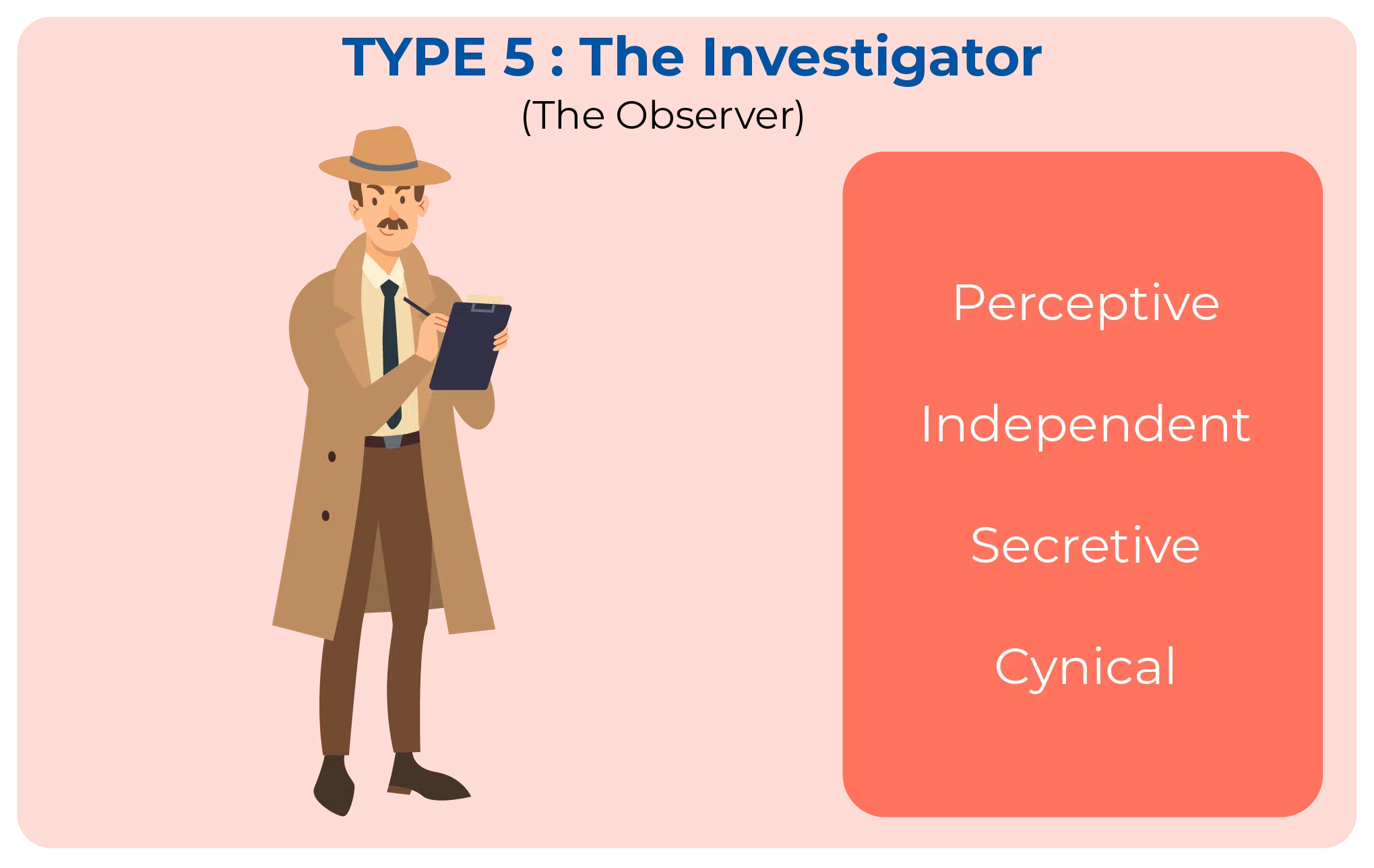
Thinking and analyzing come naturally to Type 5 people, but they can sometimes feel less in control when dealing with feelings. Because they are usually happy with their own company, they can feel a bit socially awkward in large crowds.
This personality type tends to avoid intrusive people and hates expressing strong feelings about anything without having analyzed it thoroughly.
While healthy Type 5 personalities are non-demanding, unobtrusive, thorough, and can be perceptive, unhealthy ones tend to be secretive, standoffish, cynical, and prideful about their intellectual prowess.
You can find detailed information about this type here.
Type 6 – Loyalist
Also called: The Loyal Skeptic or the Troubleshooter
People with type 6 personality believe in being secure and certain. Type 6s like stability and tend to find structures to depend upon in a world that keeps changing constantly.
They are driven by the need to feel like they belong and need a secure, predictable environment to thrive in. Type 6 personalities are inquisitive problem-solvers who can make for great, trustworthy friends.
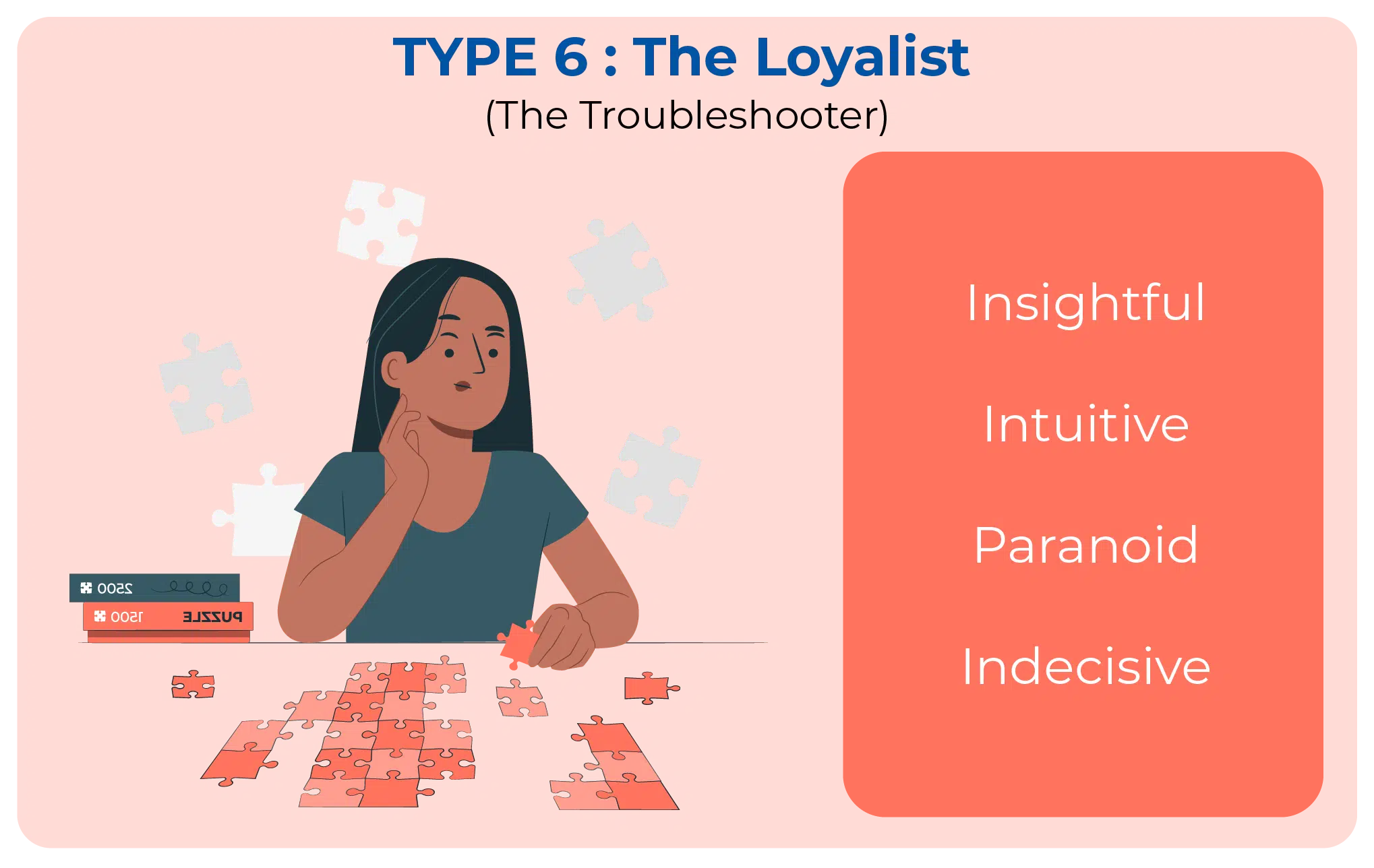
They constantly worry that something might go wrong, and that they’ll be left at the mercy of whatever happens.
To combat this fear, some Type 6 personalities withdraw from fearful situations entirely, while others confront such situations head-on.
They prefer to avoid unpredictability and being helpless in difficult or dangerous situations.
Healthy Type 6 personalities are intuitive, responsible, loyal, and insightful. Unhealthy ones, on the other hand, can be excessively vigilant, paranoid, and indecisive.
You can find detailed information about this type here.
Type 7 – Enthusiast
Also called: The Epicure or Visionary
Type 7 personalities believe in keeping all possibilities open, and in being optimistic.
They tend to focus on staying upbeat and seek out adventure in everything they do, while still contributing to the world around them. Type 7 folks are vivacious and enthusiastic, always open to new experiences and pleasures.

They tend to avoid the mundane and the boring, and hate limitations and restrictions or being told that they shouldn’t do something. Because of this, they can have problems with finishing their projects as they are always ready to begin a new one.
Painful emotions like loss, regret, or anxiety don’t sit well with Type 7 people, either.
Healthy Type 7 people are optimistic, spontaneous, curious, and tend to liven up others around them with their infectious energy and their ‘Let’s try it!’ attitude. Unhealthy ones, though, can be reckless, undisciplined, self-indulgent, and hyperactive.
You can find detailed information about this type here.
Type 8 – Challenger
Also called: The Protector
People with Type 8 personalities believe in being self-reliant and powerful.
They link their sense of worth to their need to be strong, courageous, and protective of the people they consider important. They tend to be just and fair in their dealings while also being action-oriented.
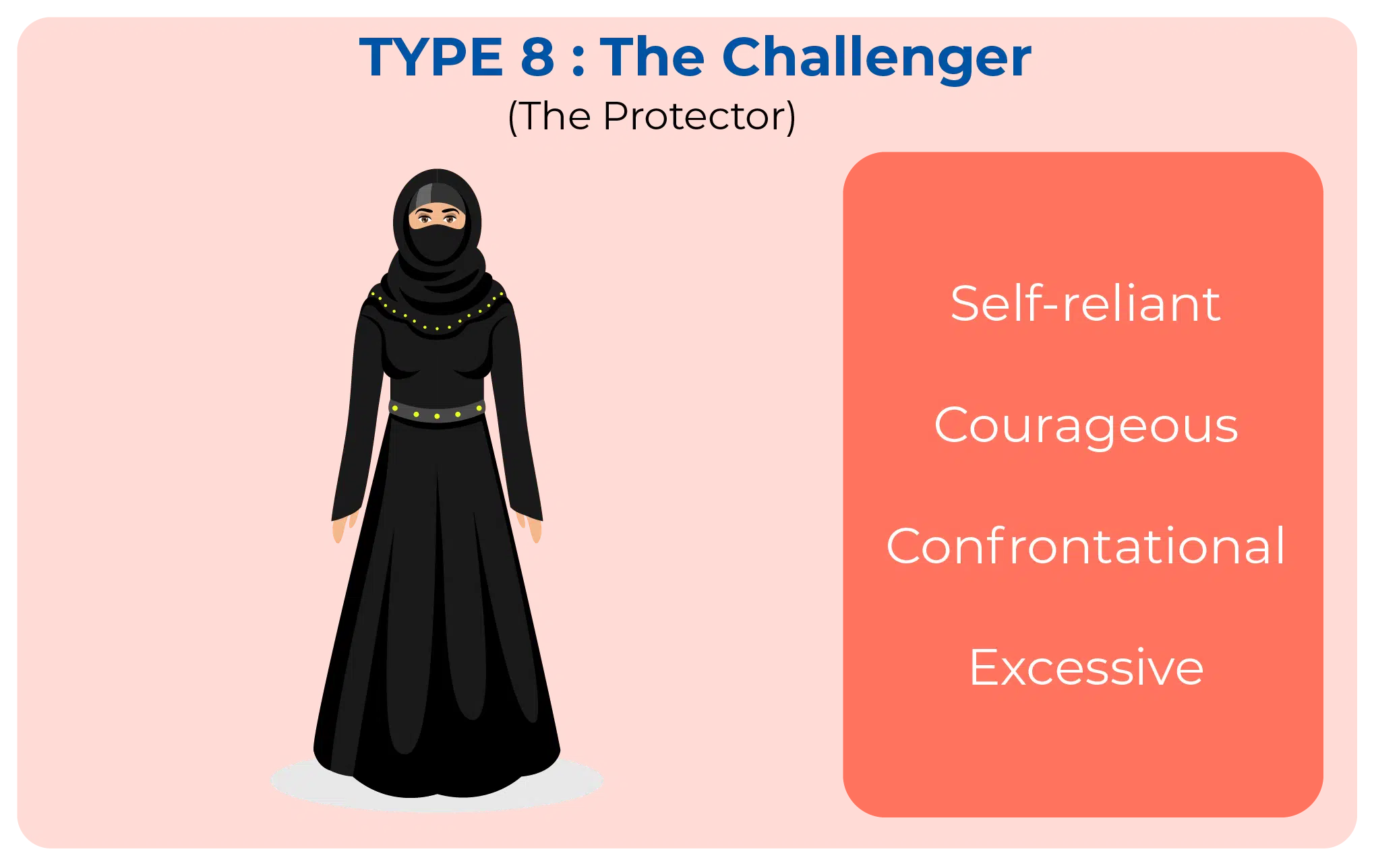
Type 8 personalities are natural leaders in any situation, and are driven by a need to be respected for their strength rather than liked for their behavior.
Type 8 folks tend to avoid being seen as vulnerable or dependent on others.
Because they are so focused on being strong, they can sometimes come across as forceful and aggressive. Type 8 hates to feel like they are not in control or, even worse, are being controlled by someone else.
When healthy, Type 8 people are confident, courageous, decisive, and act as protectors. When unhealthy, the same personality type can be confrontational, excessive, insensitive, and bull-headed.
You can find detailed information about this type here.
Type 9 – Peacemaker
Also called: The Mediator
Type 9 personalities believe in finding harmony and balance in the world around them.
Their sense of love and worth is connected strongly to how well they can go with the flow and blend in.
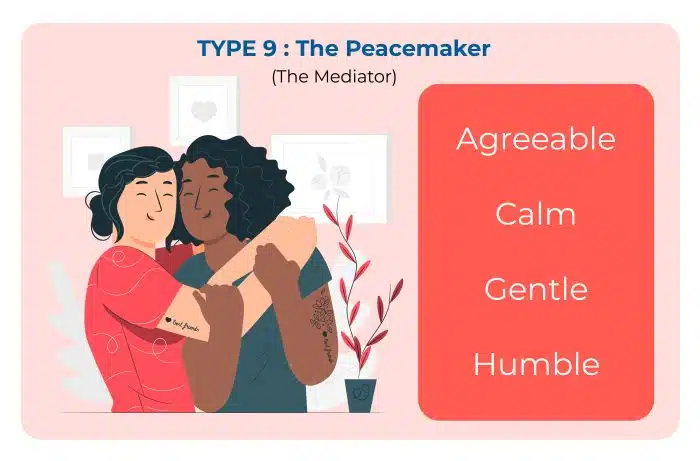
Type 9 personalities tend to be amiable, easy to get along with, and are driven by a need to maintain peace and get along with others.
Because of their amiable nature, they can be indecisive or have difficulty saying “no”. They can be easily distracted from the task at hand.
Type 9 folks, therefore, tend to avoid situations involving confrontation, even when it is necessary. While they are usually ready to accommodate other people to avoid conflict, they can sometimes be stubborn if things don’t go their way.
Healthy Type 9 people are compassionate, ready to adapt, patient, and non-judgemental while unhealthy ones can be indecisive, self-forgetting, passive-aggressive, and undisciplined.
You can find detailed information about this type here.
Elements of the Enneagram
The Enneagram figure mainly represents the nine core personality types.
But beyond this figure, the system of Enneagram also includes other elements like subtypes, wings, levels, centers, instincts which make its structure a bit more complex.
I will now be talking about these elements in detail and will now be showing you how they influence the core personality types of the Enneagram model.
Wings
Most theorists believe that each personality type is influenced by the types that lie on either side of it on the Enneagram. These two personality types are called the wings of your core personality.
For example, if your core personality type is 3, your wings will be 2 and 4. If you are more influenced by your wing Type 4, your Enneagram personality can be written as 3w4.
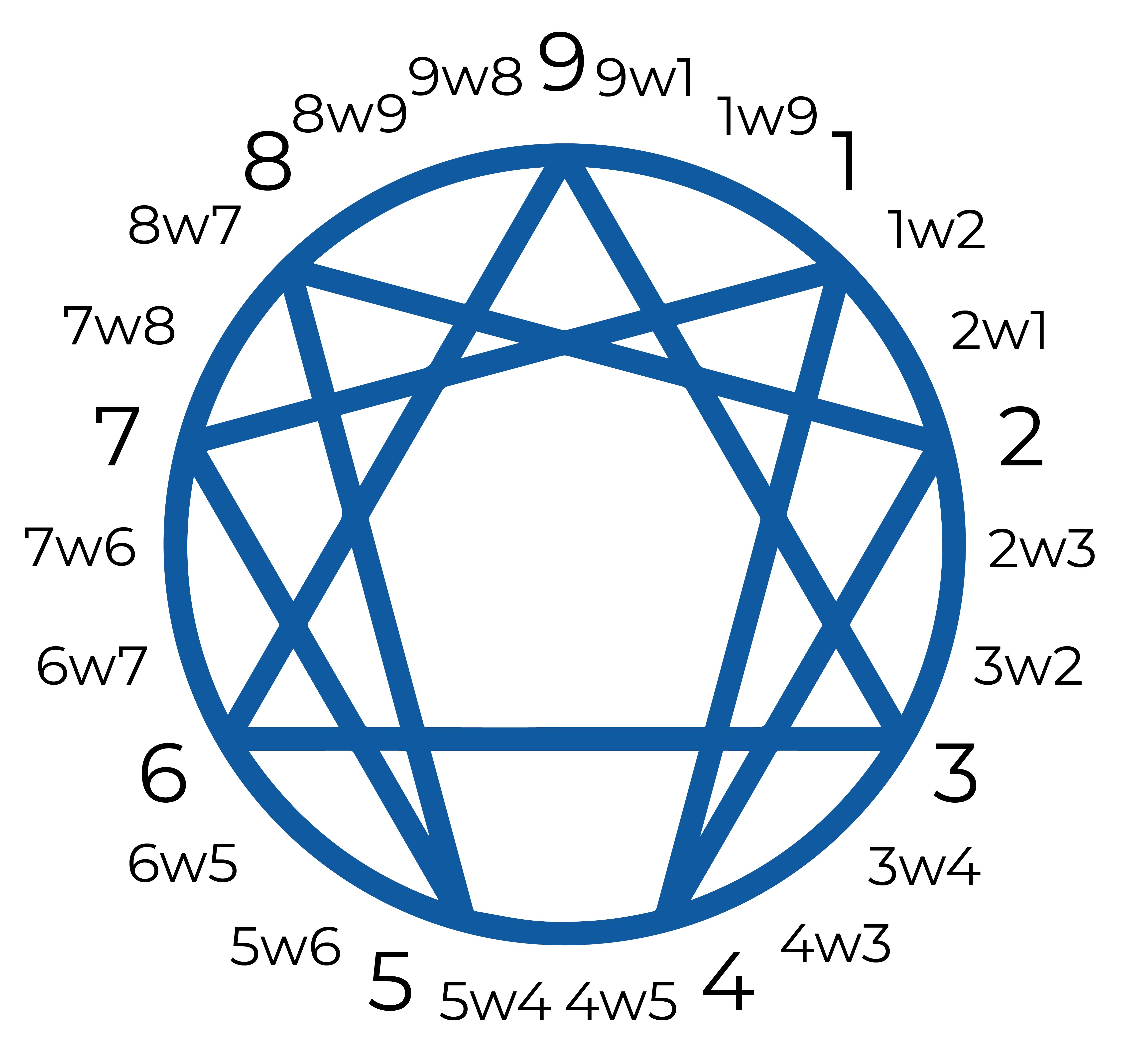
While the wings can modify the core personality to an extent, the core type and its main motivations and traits do not change.
The wings help us understand where our secondary motivations and traits come from.
Moreover, it is almost impossible to have both wings exert the same amount of influence over a person’s behavior or personality.
Usually, one wing has more influence over a person’s enneatype than the other. This is called the dominant wing.
Sometimes, the influence of the wing can even be at odds with a person’s behavior and traits.
Let’s move on to Levels next.
Levels
The Levels of Development were first described by Don Riso and Russ Hudson.
According to them, each personality type has three levels – healthy, average, and unhealthy.
Within each personality is a structure of behaviors, instincts, defenses, motivations, and attitudes.
The levels help us understand how these traits are interrelated, and how an average trait can change levels to elevate to a healthy level or deteriorate to an unhealthy level.
The levels of development give us an idea of the spectrum of each personality type.

This is crucial when assessing different people of the same type; their personalities might be different owing to the differences in their levels of development.
Further, there are three sublevels within each level of development.
At the very top, we have the healthiest level, which deteriorates as we move down the scale, ending with psychological breakdown or psychosis right at the bottom.
I’m going to be delving into Directions next.
Directions (Growth and Stress/Integration and Disintegration)
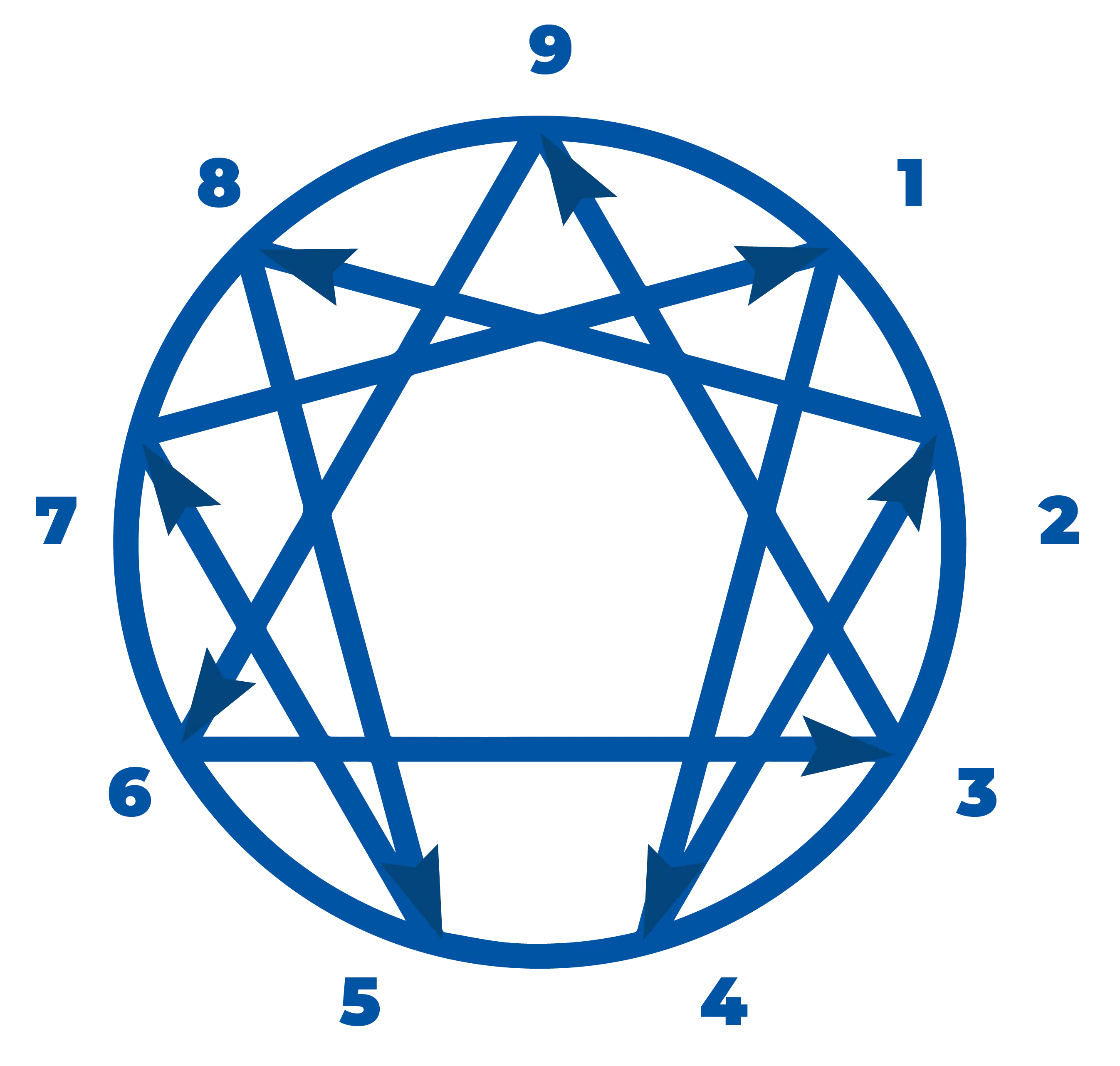
The arrows coming to and going from each type show the direction of growth (integration) or direction of stress (disintegration) of that type.
These lines connecting the points on the Enneagram are also considered when studying each personality type. They offer important insights into how each type tends to respond or adapt in different situations.
Two lines connect to each type, and they also connect with two other types.
One line depicts how a person behaves when they move towards growth, health, and security. This is called the Direction of Growth or Integration.
The sequence for the Direction of Integration is 1-7-5-8-2-4-1 and 9-3-6-9.
The other line represents how the same person behaves in situations that are out of their control — situations of stress or pressure. This line is called the Direction of Stress or Disintegration.
The Direction of Disintegration or Stress for each type is 1-4-2-8-5-7-1 and 9-6-3-9 for the triangle.
For more detailed information about the directions of stress and growth, check out the Enneagram Institute’s page here.
Centers
The Enneagram of personality is arranged in a 3×3 format: nine personality types are divided into three centers of intelligence.
The three centers are the Instinctive or Gut center (8-9-1), the Feeling center or Heart center (2-3-4), and the Thinking center or the Head center (5-6-7).
Each center includes three personality types that have some common pros and cons of that particular center.
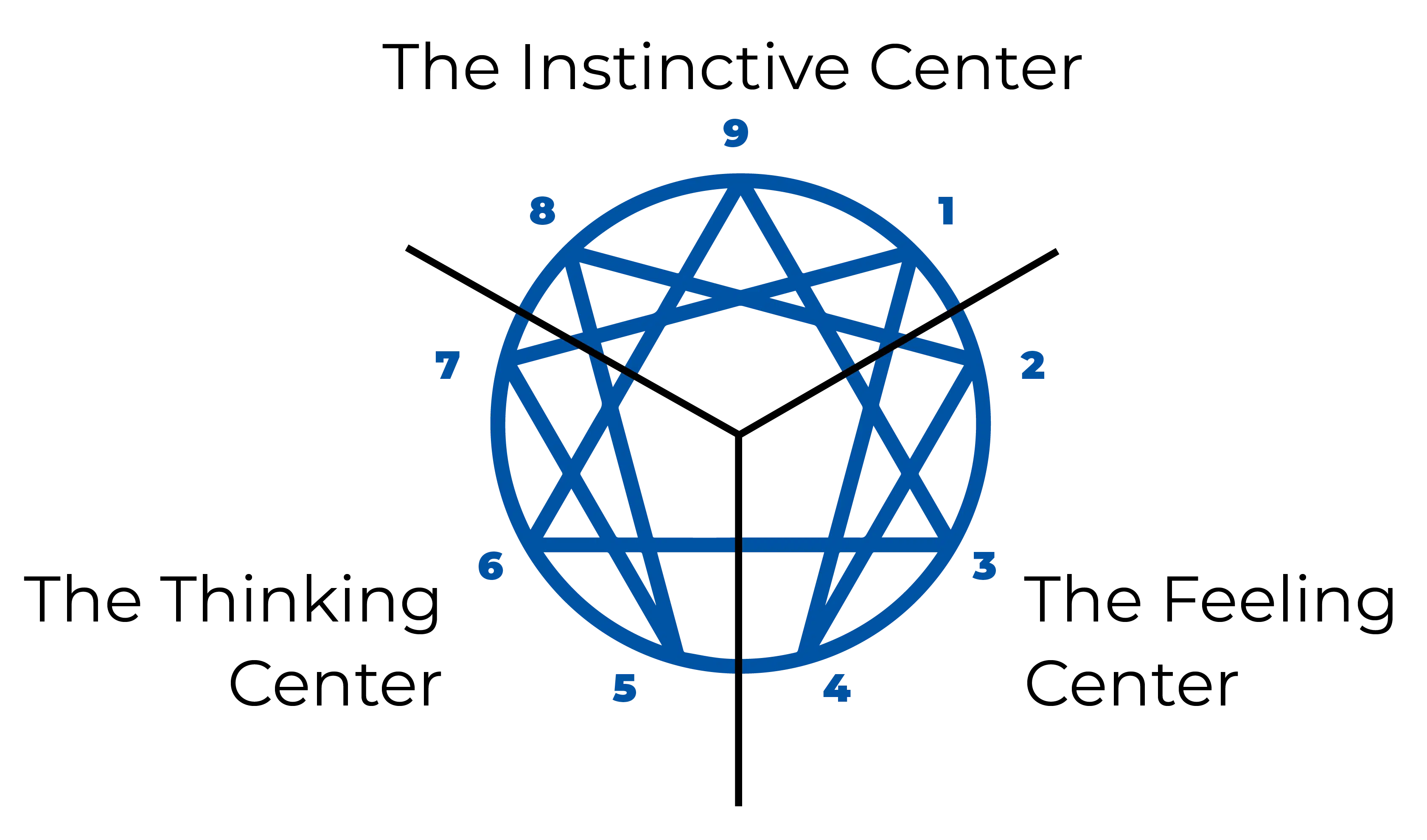
Each personality type has a connection to the range of issues that characterize that particular center. Most of these issues are subconscious or unconscious emotional responses the types exhibit when they move away from their core self.
In the Gut center, the emotion is anger. In the Heart center, the emotion is shame, and in the Head Center, the emotion is fear.

Naturally, all nine types contain all three of these emotions, but the personalities of each type in each center are affected by that center’s main emotion.
Coping Mechanisms of Each Center
Each personality type also has a coping mechanism when dealing with the dominant emotion of its center.
I will cover the most notable emotions of each center in this section, including how each personality type responds to their dominant instinctual energy.
Instinctive Center
In the Instinctive Center, the main emotion is anger or rage.
Type 8 personalities physically act out their anger and instincts. They respond to their anger by raising their voice or by being forceful in their movements.
Type 9 personalities, on the other hand, tend to deny their anger and instincts. They often feel threatened by their anger or instincts, and are usually the type which are most out of touch with these instincts.
While Type 9 folks get angry like everyone else, they try to stay out of the darker depths of their anger by focusing on perfect relationships in their world.
Type 1 usually tries to repress their anger. They have an innate need to stay in control of themselves, their impulses, and their instincts at all times. So they try to redirect this energy to the whims of their critical superego.
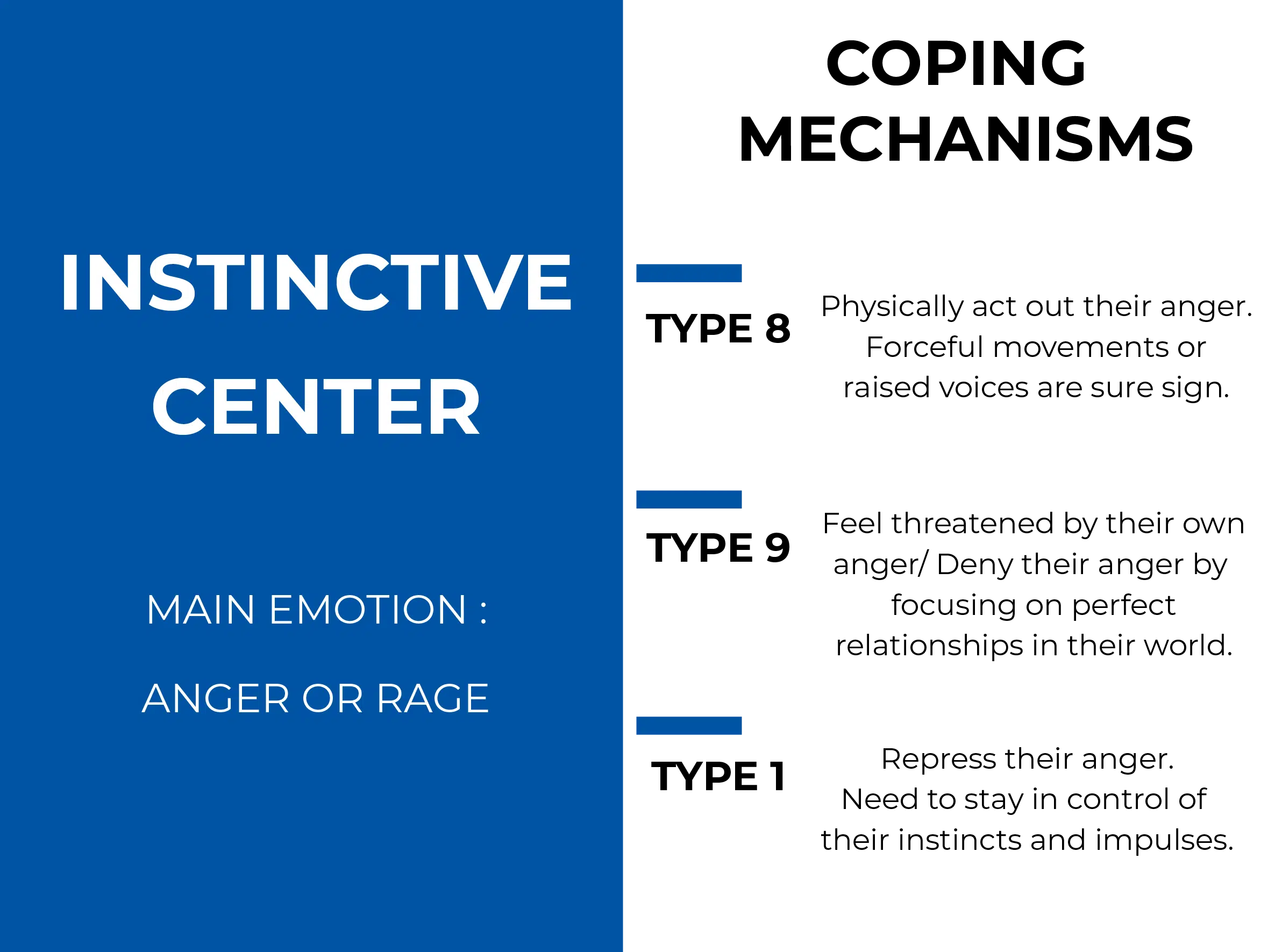
Feeling Center
In the Feeling Center, the dominant emotion is shame.
Type 2 personalities get people to like and value them and, thus, attempt to alleviate their feelings of shame.
In an effort to convince themselves that they are good people, they tend to ignore their negative feelings — like anger and resentment for not being appreciated enough — and instead focus on their positive feelings for others.
Type 2 folks can control their feelings of shame and being unwanted if they get positive emotional responses from other people around them.
Type 3 people, on the other hand, try to deny their shame and are usually the most out of touch with the feelings of inadequacy that lie under the surface.
This personality type learns to deal with shame by repressing their feelings of shame and inadequacy, and by pursuing their ideal of success or the image of a successful person relentlessly.
Type 4 folks try to control their feelings of shame by focusing on what makes them special and unique — their talents, feelings, or personal characteristics.
Their individuality and creativity become their shields against shameful feelings. However, type 4 is the most likely to succumb to their feelings of shame and inadequacy.
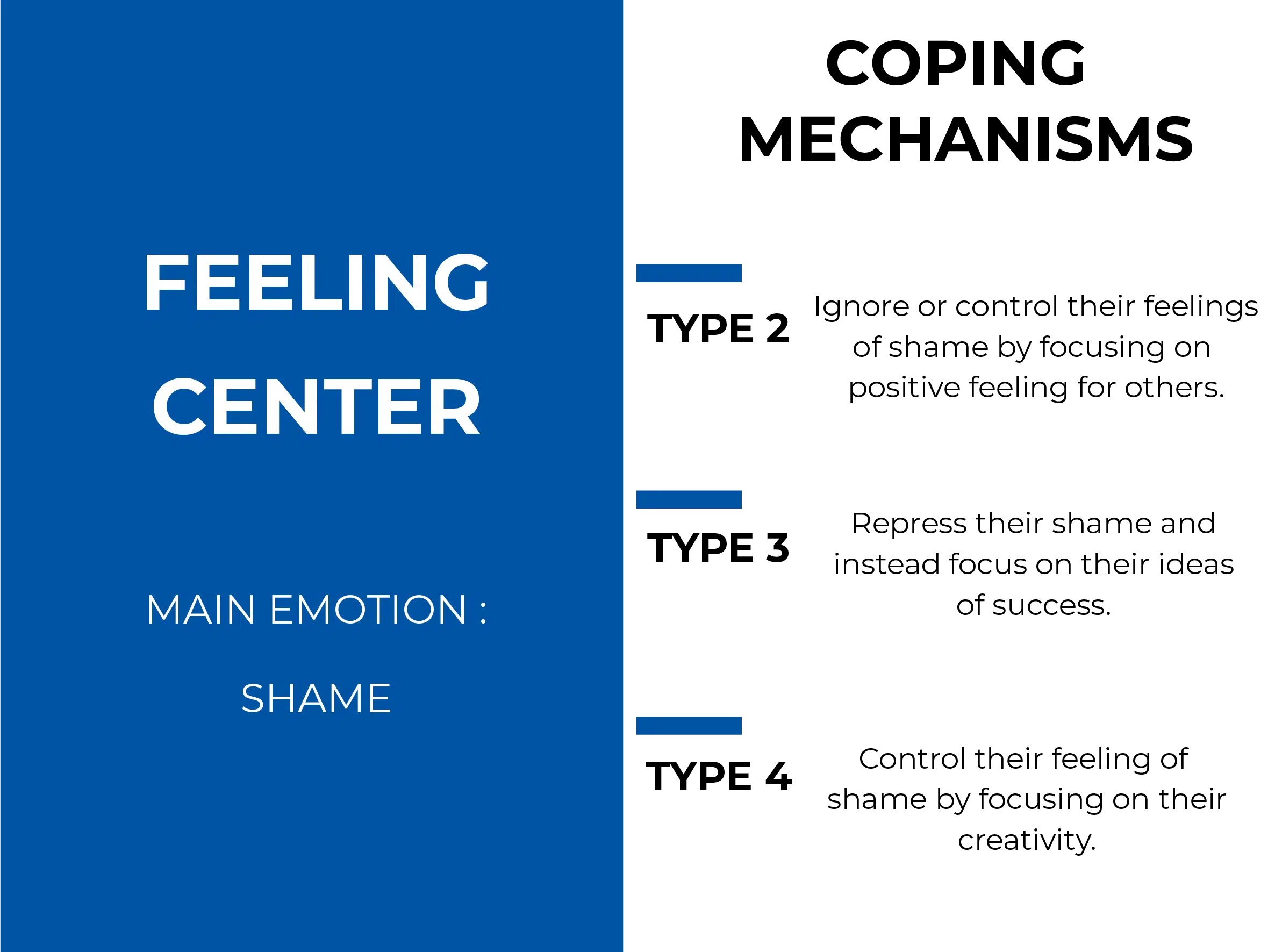
Thinking Center
The main emotion associated with the Thinking center is fear.
Type 5 folks are generally fearful of the outer world and are afraid to deal with it. They work around this fear by withdrawing from the world and becoming secretive and isolated loners.
The underlying hope for Type 5 is to be able to participate in the outer world once they have come to their own understanding of reality. However, quite counterproductively, they never feel confident enough in their own knowledge to rejoin the rest of the world.
As a result of this coping mechanism, their inner worlds get increasingly complex over time.
Type 6 personalities show their fear as anxiety, and are easily the most fearful of all three types in this center.
This causes them to lose touch with their inner confidence and knowledge. People with this personality type also have difficulty trusting their own minds, so they turn to external factors — philosophies, relationships, authorities, beliefs, or a combination of all of these — to reassure themselves.
Despite these fortifications, they still tend to feel anxious and, sometimes, even doubt the structures they created for reassurance.
In rare situations, Type 6 personalities can respond to their fear by confronting it head-on in an effort to rid themselves of it.
In contrast, Type 7 personalities fear their inner worlds.
They avoid their feelings of pain, loss, and anxiety by indulging in thoughts of exciting possibilities and adventures as a form of distraction.
As long as Type 7 personalities keep their minds stimulated and occupied, and have something to look forward to and act upon, they can avoid their fears.
They can thus be found chasing after one exciting adventure after another and keeping themselves engaged with their multitude of ideas and options.

Now that we’ve explored the Centers of the different Enneatypes in detail, let’s take a look at Instincts.
Instincts
The Enneagram has another layer of complexity to it — the three instincts.
Every living being has three instincts hard-wired in them — Self-preservation Instinct, Sexual Instinct, and Social Instinct.
These instincts, also called the three instinctual subtypes, are an important aspect of the Enneagram model as they majorly influence our personality.
Simultaneously, our Enneagram type influences how we approach our dominant instinctual need.

The three instincts, present in everyone, form an Instinctual Stack in each person.
The dominant instinct guiding our behavior and values at the top, the secondary instinct supporting the dominant one in the middle, and the least developed one forming a kind of blind spot at the bottom.
Studying each of the nine personality types of the Enneagram together with the three instincts create 27 unique combinations called the Instinctual Variants.
These variants account for the differences and variations in each Enneatype, thus giving us a more specific understanding of the personalities.
Let’s identify and explore these three instincts in detail.
Self-Preservation Instinct
People with this dominant instinct focus on safety, health, and a general sense of well-being of their physical body.
Their main priority is to have enough resources to meet their needs.
As most modern humans haven’t faced survival in the same way that ancient humans did, people with these instinctive tendencies now focus on physical comforts such as food, money, housing, etc.
They are also generally more grounded, practical, serious, and introverted than the other two instinctual types.
Sexual Instinct
People with dominant Sexual Instinct are keenly aware of interpersonal dynamics between themselves and others.
This, however, does not mean that they are just interested in one-on-one relationships.
The need for stimulation is a constant in this type, but it does not always pertain to sexuality.
People with the Sexual Instinct gravitate towards people or relationships that seem to have good energy or chemistry.
Out of all three types, people with this instinct are more energized, intense, competitive, or aggressive. If they feel that their primary relationships lack energy, they remain unsatisfied.
Social Instinct
Just as the Sexual Instinct is misinterpreted as necessarily manifesting in one-on-one relationships, people also misinterpret the Social Instinct as always being a part of a group.
People with a dominant Social Instinct are great at adapting to their environments and finding ways to fulfill the needs of social situations they find themselves in.
These people are extremely aware of how their actions affect those around them. In other words, they know instinctively how to read a room.
The need for a personal connection is what drives this type. They tend to be warmer, more engaged, and socially responsible than the other two types.
However, they tend to lose their personality when they are not involved with others in activities that are aimed towards a greater, more community-oriented purpose.
Chapter 3
The Enneagram Test
Now that you understand the structure and various elements of the Enneagram model, it is time to learn how to identify the different Enneatypes.
Most importantly, I’m going to be delving into how to use the Enneagram tool as a coach.
In this chapter, I will also be answering questions about the Enneagram and other personality tests and where you can find them.
Let’s get started!
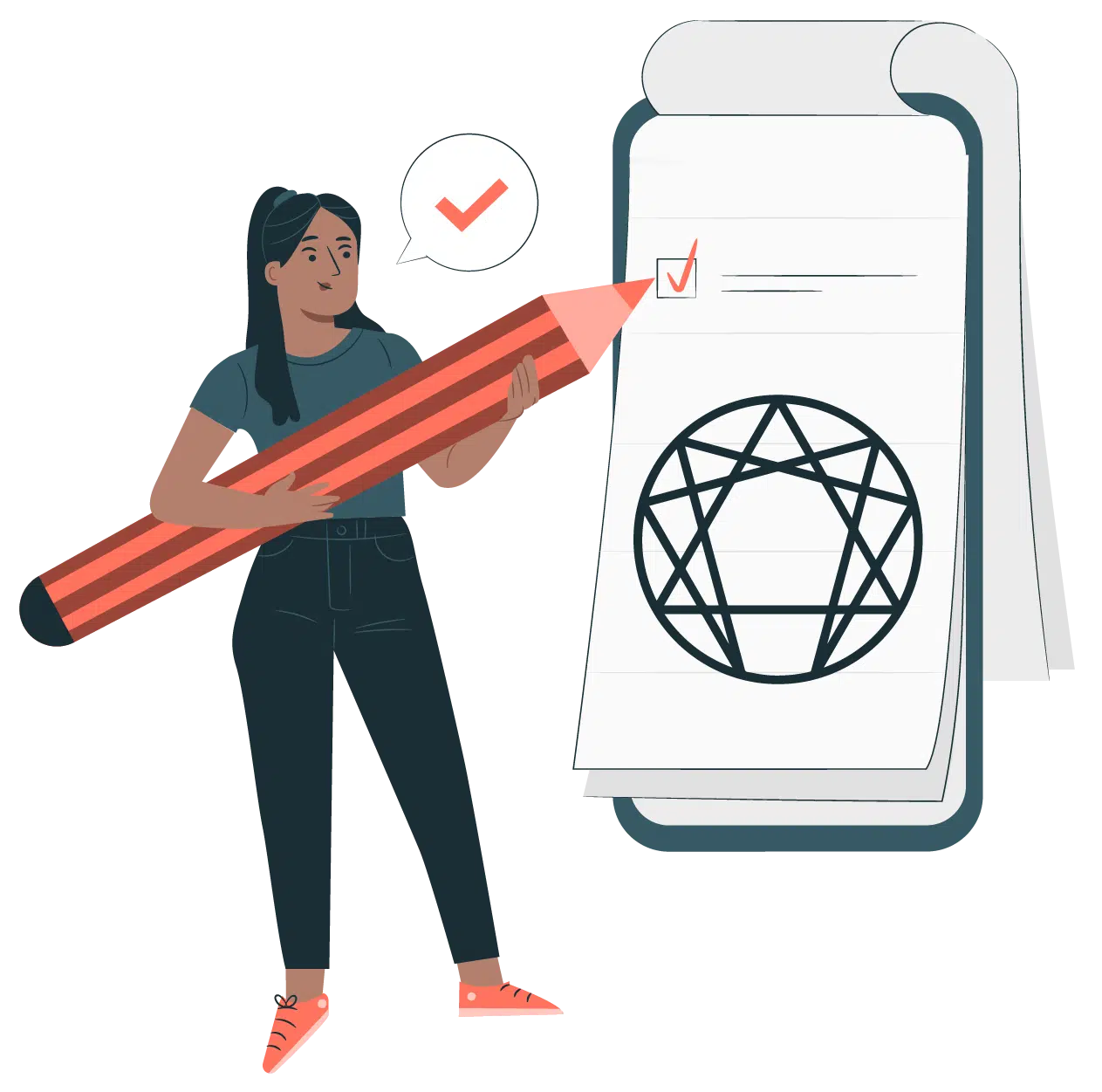
What are Enneagram tests?
Enneagram tests make it easier for people to discover their personality type and learn more about themselves in the process.
Most Enneagram-based tests have a set of questions that you have to answer — basing your answers on what your instincts or feelings are and, not what you would like them to be.
There are no right or wrong answers; you only have to rate words, phrases, or statements according to how accurately they apply to you.
For some people, it is very easy to figure out which personality type they are most like.
In fact, this study found that 87% of individuals were actually able to accurately predict their Enneagram type, before taking the test — just by reading the descriptions of each type.
But for others, it can be confusing to figure it out by themselves.
How to Identify your Personality Type
The best way to figure out which type of personality you are is to read extensively about each type.
You will find a lot of resources throughout this guide, and I have also included some extra resources at the end of the guide for you.
Once you have read through enough of the material, you will find the type that resonates with you the most.
Taking an Enneagram assessment can also be a good start.
Personally, I found that taking a couple of different tests gave me a better idea of the personality type I most identify with.
One important thing to keep in mind is that Enneagram tests are not completely accurate. They can, however, give you a fairly good idea of where to start.
Go ahead and read up on the top 2-3 results you get; your core type will be one of those.
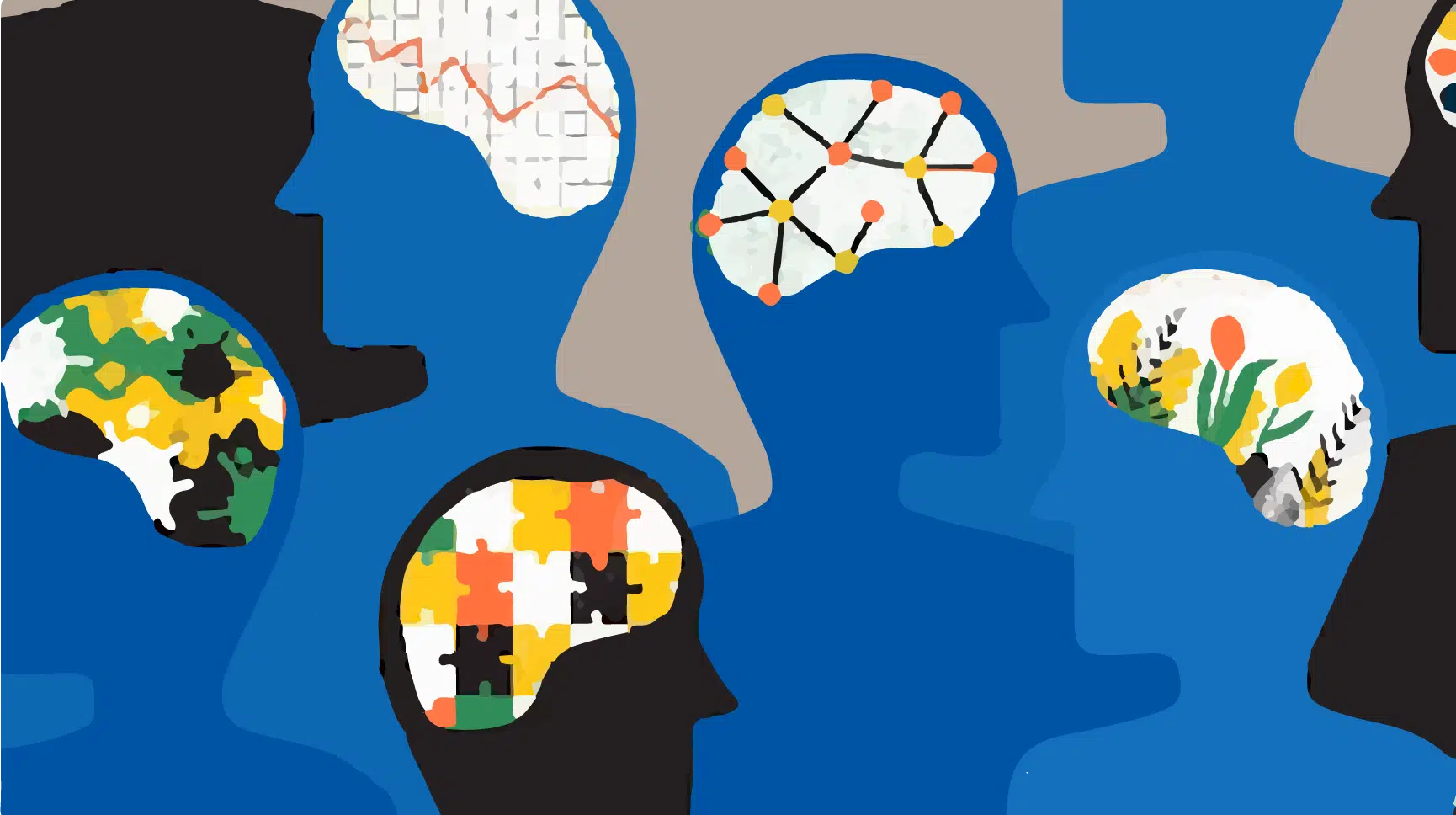
What are the different Enneagram tests?
There are many schools of thought when it comes to the Enneagram, and experts rarely agree on the methodology and accuracy of the assessments.
Thus, there is no definitive test for the Enneagram as the Enneagram theory has been developed by many different people over the years.
No assessment is 100% accurate; most tests only give you a general idea of the direction you need to take.
Let me take you through a few of them.
RHETI®
According to the Enneagram Institute, the RHETI® is the world’s most popular Enneagram-based test.
It is a scientifically validated, forced-choice personality test with 144 paired statements and takes about 40 minutes to complete.
This test does not give you just one basic type but shows a full profile across all personality types.
Based on your answers to the questionnaire, the RHETI indicates, through a numerical score, how close your personality is to each of the nine types. It also indicates the strengths and weaknesses of the nine types as they relate to you.
Among all the Enneagram-based tests, the Riso-Hudson Enneagram Type Indicator (RHETI®) is widely considered the most accurate.
This test, conducted by the Enneagram Institute, has an accuracy of 72%, which is a solid score for a forced-choice personality test.
The RHETI® was developed by Don Richard Riso and Russ Hudson in 1993.
It is an Enneagram of Personality psychometric test that has, over the years, been found to be of great heuristic value as a personality measurement tool.
You can find the test here.
Open-Source Psychometrics Project
The Open Enneagram of Personality Scales (OEPS), by the Open-Source Psychometric Project, was created to combat a common problem with many of the previously developed tests: test questions that seem ambiguous and do not give a clear measure of the nine types.
The OEPS was developed with the help of a group of people who knew about the Enneagram and its personalities.
It was developed as an open-source assessment, to match test-takers to the most common conceptions of the nine types.
This free test has 36 statements that you have to rate on a scale of 1-5 of how much you agree with each statement.
Here’s a glimpse of what it looks like:

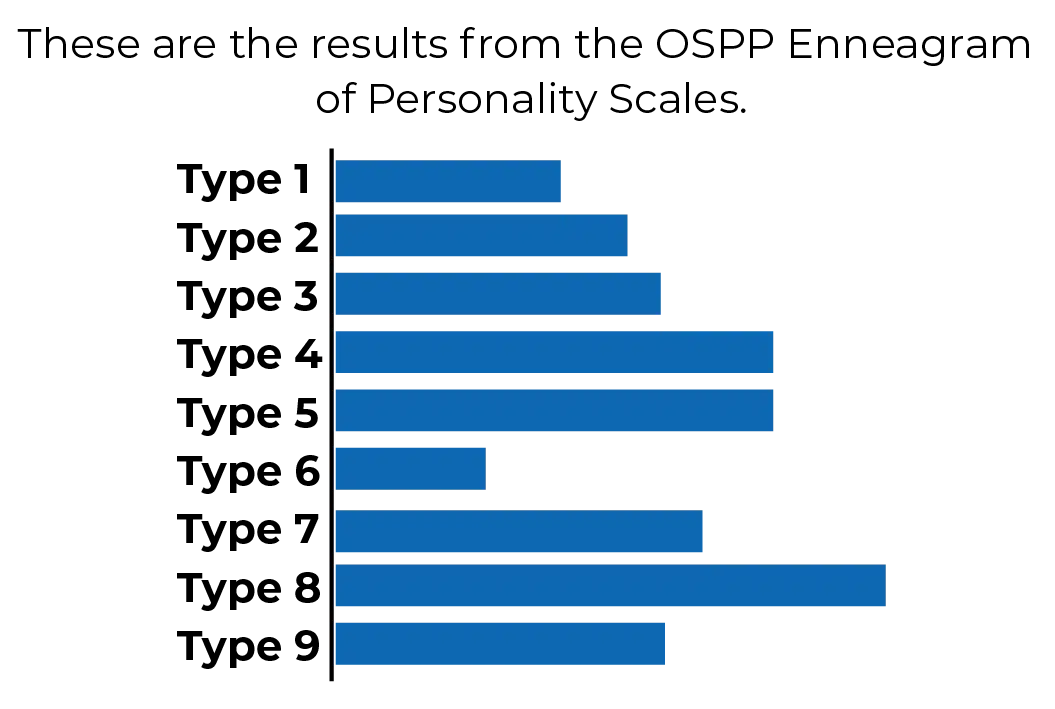
You can find the OEPS here.
Truity
Truity’s Enneagram test has over 100 statements that you have to evaluate. When you take the test, you have to rate each statement’s accuracy on a scale of five.
Instead of giving you a firm answer about which Enneatype you are, Truity shows you how much you relate to each of the 9 types.
The result also includes straightforward explanations about each type so you can decide for yourself how accurate the test’s results are.
While the free version includes a brief report about your Enneagram personality, you can also purchase a more comprehensive report from Truity for $19.
You can find Truity’s Enneagram test here.
Free Enneagram Tests to Check Out
Other than the Enneagram tests I mentioned above, here are some more tests that you can try out.
And the best part is that these tests can be taken free of cost!
I took more than 15 different tests available on the internet before gathering all the information for you in this guide.
I found that Cloverleaf and Enneagramtest, along with OEPS which I mentioned in the previous section, gave me the most reasonable results (I’m a Type 2 or a Type 9, depending on which test I took).
The Truity and Crystal Enneagram tests, on the other hand, offered interesting insights about my personality.
The EnneaApp is free to download on Google Play or the App Store.
It offers a free Enneagram test that shows you your top three most likely types. A longer, more detailed report can be bought for $2.99.
EnneaApp offers in-app resources to help you learn more about the Enneagram and which type fits you the best.
It also offers tips about how to get along with other personality types at work and, in general, life.
Typing the Self and Misidentifications
Misidentification or mistyping is a common problem most people face when they start learning about the Enneagram.
While learning more about the 9 Enneatypes is supposed to make it easier to figure out your type, it can also lead to a lot of confusion.
Thanks to the complexity of human nature, almost all the types can be misidentified or interchanged with one another.
But certain sets of types are commonly misidentified for others.
For example, Type 2 and Type 4, Type 5 and Type 9, Type 3 and Type 1, etc.
It is more difficult to identify another person’s type than figuring out your own. We often have less than complete information about the other person, and this hinders our ability to establish their personality type perfectly.
When typing someone, detailed information acquired over a period of time and by observing them in different situations is crucial.
Another factor that features in misidentifying someone’s Enneatype is the complex nature of the Enneagram.
When we consider the influence that the Wings, the Directions of Growth and Stress, the Levels, etc. have on each type and the similarities that can arise out of such details, we can understand why it is easy to misidentify someone’s personality type.
Here are some of the most common mistypes:
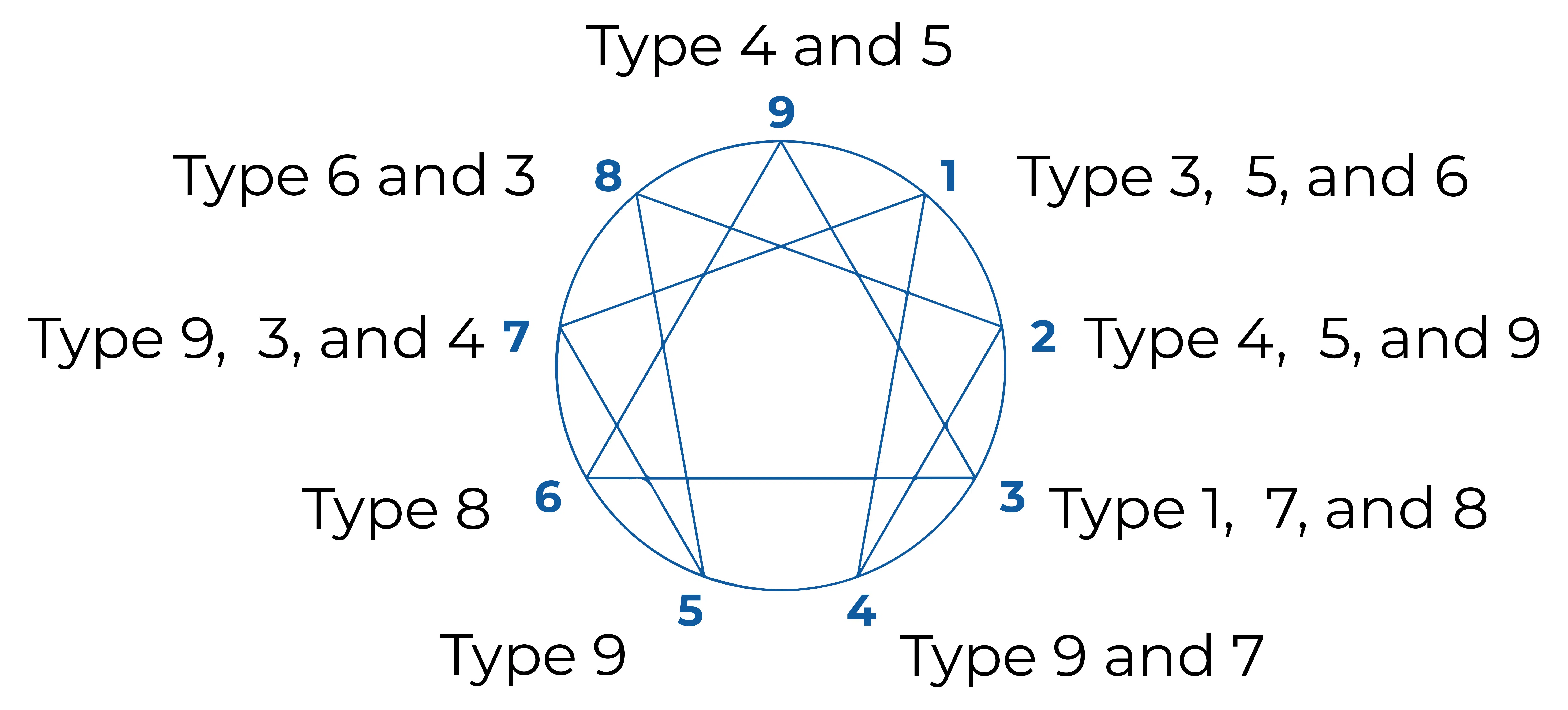
For more information about misidentifications, the Enneagram Institute has a detailed comparison guide for each type.
Chapter 4
Uses of the Enneagram
The Enneagram is a versatile tool that has found acceptance and popularity across many different fields.
In this chapter, I will cover the relevance of the Enneagram and its usage in different areas of work and life.
Most importantly, I take a look at how the Enneagram is used in the field of life coaching.
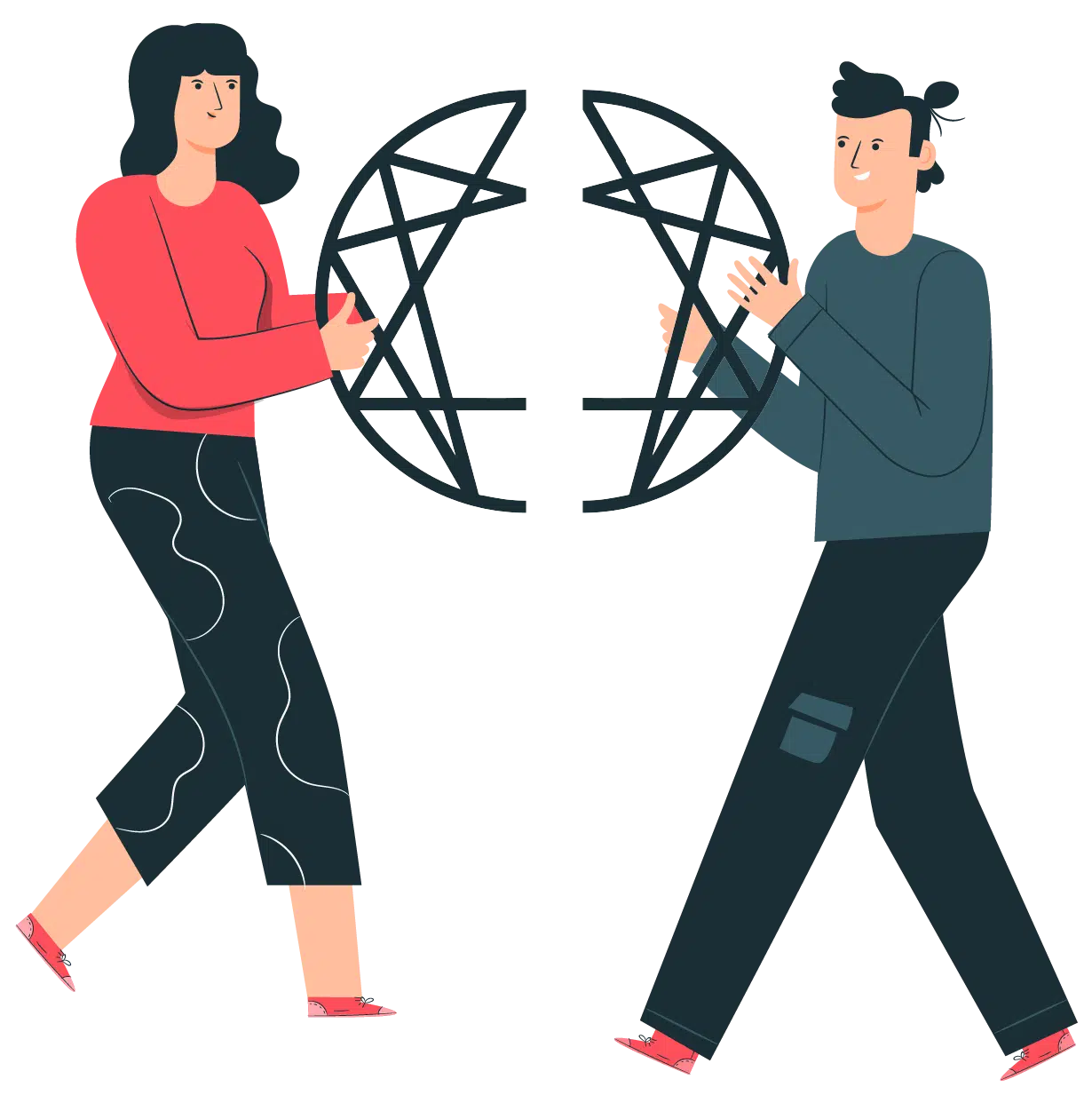
Why is the Enneagram so relevant today?
Since the 1960s, when the Enneagram started being recognized in the world, its usage and popularity has risen steadily.
Especially in the past couple of years, the Enneagram has become more relevant in the world. It is being used in the workplaces too, even in the Fortune 500 companies of the world.
This tool lies at the convergence of psychology and spirituality that convinces people to take a deeper interest in understanding personalities — their own, as well as those of others around them.
It also helps them in learning about their motivations and fears and to take action accordingly.
How is the Enneagram used in different fields?
From psychotherapy to executive coaching, the Enneagram has proved to be of great use.
While the theory behind the Enneagram is still seeing some developments, the Enneagram has already been proven to be useful as a tool for personal growth.
It helps people get better insights into their strengths, motivations, and fears and even helps in building better relationships and ways of communication with their partners.
Many therapists and mental health practitioners also find the Enneagram to be useful when getting to know their patients.
There are certain distinct patterns for each Enneatype that are easy to identify.Therapy can, thus, be personalized for each patient according to the insights provided by their type.
Therapists who use the Enneagram for sessions with their clients usually start by identifying the client’s personality type, then move towards identifying the problem areas and setting reasonable goals.
The Enneagram is a powerful tool in business coaching as well.
In many organizations, it is an essential tool that is used for team building, interpersonal communication, leadership development, etc.
With the help of the Enneagram, employees get a better understanding of interpersonal relationships and group dynamics at their workplace.
It can also be used to increase productivity.
What do Enneagram coaches do?
To start with, Enneagram coaches help their clients figure out their Enneatype.
This comes with exploring who they are, what motivates them, what fears hold them back, and what they respond positively to, etc.
Enneagram coaches have an in-depth knowledge of the workings of this tool, gained either through extensive studying and their experience over the years, or by completing certain courses and getting certified, or both.
They learn how to work with each patient and guide them through their questions about the Enneagram and their Enneatype.
Unlike in therapy, in Enneagram coaching sessions, the focus usually is on the client’s personality traits and/or current predicament.
Enneagram coaches then give the clients certain tools and guidance to work through their problems and move towards a better future.
How to Become an Enneagram Coach
The Enneagram is one of the most powerful tools available to augment your coaching practice.
But how do you become an Enneagram coach?
One of the prerequisites for an ‘E Coach’ is extensive knowledge of the Enneagram of Personality. This article and the resources I’ve listed in the last chapter will certainly help you on this path.
Other than in-depth knowledge of the Enneagram, there are a few certifications you can complete that will add credibility as an Enneagram coach.
The Narrative Enneagram, founded by Helen Palmer and David Daniels offers a 3-day professional training program for people looking to work one-on-one with their clients.
In the past 25 years, more than 3000 people have participated in this course and become certified practitioners or teachers.
Their course titled ‘The Enneagram for Therapists, Counselors and Coaches (ETCC)’ is geared towards empowering coaches and practitioners to create a meaningful impact on the lives of their clients with the insights that the Enneagram offers.
Although the preparation for this course can be quite extensive, the course has been deemed extremely useful by previous students.
Priced at $885, they also offer a limited number of scholarships for each course.
Cloverleaf offers a learn-at-your-pace online course that takes 3 hours on average to complete. At the end of the course, you also have a one-on-one session with a Cloverleaf representative to complete your certification.
Cloverleaf’s Enneagram certification teaches you the skills to work with teams as well as individuals in companies and other organizations.
Learning how to use the Enneagram in groups and how to use its insights for improving team dynamics is a core objective of this certification.
Cloverleaf’s Enneagram certification program costs $500 and includes in-depth assessments about the Enneagram, its elements, and detailed information about the 9 Enneatypes.
It also includes a training module about how to walk your clients through their Enneagram assessments.
International Enneagram Association is a membership association that provides a platform for learning about the Enneagram and its applications across diverse fields.
The IEA promotes the understanding and appreciation of the Enneagram of Personality as well as the ethical use of the Enneagram across the world.
The IEA accreditation for its members is only awarded after completing a rigorous set of requirements. Because of that, coaches with this accreditation are held in high regard not only in the Enneagram coaching community but also by their clients.
Now you have a better idea of the certifications you need to become a credible Enneagram professional.
But information about the Enneagram and these certifications are just one aspect; you should also know how to guide others in their lives.
This article on coaching is a valuable resource and will help you on your journey to becoming a great Enneagram coach!
Chapter 5
Drawbacks of the Enneagram
Though the Enneagram is useful, it is not perfect.
The Enneagram comes with its own share of drawbacks that have drawn criticism from experts.
In this chapter, I will tell you briefly about the flaws in the Enneagram structure and how, despite the criticism, the Enneagram continues to be a popular tool for self-discovery and improvement.

Criticisms about the Enneagram
The human personality is a difficult topic to address satisfactorily even with the most detailed model.
As a result, most personality mapping models have a few drawbacks.
The Enneagram of Personality has also drawn criticism from several experts.
A major point of criticism about the Enneagram is its origin.
Some critics consider it to be — at best — a pseudoscientific model of the human psyche that is difficult to test scientifically.
It is also thought to be too vague or overly general when it comes to describing the 9 Enneatypes.
Other critics consider it to have a sort of Barnum-effect style of descriptions that sometimes seem similar to horoscopes rather than statements based on definitive, empirical research.
Rather than being based on scientific evidence and observation, the 9 Enneatypes are based on the ideas about the human psyche that people like Oscar Ichazo had.
Another point that critics often talk about stems from the fact that there are many schools of thought that describe the Enneagram in vastly differing ways.
There is no equivocal agreement about how the system of the Enneagram works. Many experts also believe that further research is needed to understand and classify human personalities in better ways.
Regardless of the dissent in the scientific community about the Enneagram, this tool has helped people across many fields to understand themselves and the people around them better.
The more you learn about your type, the wings, the directions, etc., the more specific the Enneagram seems to become.
As many practitioners of the Enneagram say that understanding one’s Enneatype and all that comes along with it, is a matter of learning in-depth about the Enneagram and its working.
Comparisons with Other Personality Tests
Some other personality tests like the Myers-Briggs Type Indicator, The Big Five, etc. have also gained popularity in the last few years.
The Myers-Briggs Type Indicator (MBTI) has 4 ways (Thinking, Feeling, Intuition, Sensing) of mapping how an individual gathers information and uses that information to make decisions.
These 4 dimensions come in 16 combinations, which in turn, leads us to 16 different personality types of the MBTI.
The Big Five personality test avoids the pitfalls of other popular personality tests.
Instead of asking questions based on intuition, the researchers who developed this test used very simple, straightforward questions that asked the test-takers to rate themselves on a plethora of personality traits (sociable, talkative, forgiving, etc).
These traits were then grouped into 5 overarching traits – Extraversion, Conscientiousness, Agreeableness, Neuroticism, and Openness to experience.

While the Myers-Briggs Type Indicator has drawn a lot of criticism from experts in recent years, the Big Five personality test continues to be accepted and used across various fields.
The Big Five is favored when it comes to personality tests as it is backed by years of research and empirical evidence.
Instead of sorting people into personality types, it only shows where each person lies on the scale of different personality traits.
Other than the Enneagram, the other popular personality tests used in workplaces across the world are:
Chapter 6
Additional Resources
Understanding the essence of the Enneagram of Personality is no mean feat.
Although this guide is very extensive and covers all aspects of the Enneagram, there are still more resources you can use to expand your knowledge about the Enneagram and truly become an expert.
Let’s take a look at them.

Research Studies
The world of Enneagram might be complex and approached from different schools of thoughts but there is no shortage of research about the Enneagram model.
Here are two studies which I think will beneficial to you as a coach:
Books
Books can be a great way to develop and deepen your understanding of the Enneagram. It can even help you create your own unique methods for your coaching practice.
I have compiled a list of some books for you here:
- The Wisdom of the Enneagram – Don Richard Riso, Russ Hudson
- Character and Neurosis: An Integrative View – Claudio Naranjo
- The Complete Enneagram – Beatrice Chestnut
- Enneagram in Love and Work – Helen Palmer
- The Sacred Enneagram – Christopher L. Heuertz
- The Enneagram and Executive Coaching: Engaging an Appreciative Perspective to Enrich the use of Enneagram Wisdom – William Berquist and Michael Goldberg
- The Nine Ways of Working – Michael Goldberg
Podcasts
Podcasts can be a great way to build a stronger grasp on the concepts and even better when you can listen to other life coaches sharing their experiences.
Here are three podcasts which I think will be a good start to your Enneagram journey:
Videos
There are several videos available online for you to check out but here are some important ones to help you expand your knowledge about Enneagram even more:
Additional Links
Some additional links to add to your rich and growing Enneagram database:
Conclusion
Congratulations on completing this guide!
I hope you enjoyed reading my ultimate guide to the Enneagram and found it useful.
Now that you have learnt about the Enneagram model and have a thorough understanding, I would like to hear your opinion.
I am most curious to know — what do you think of the Enneagram and how do you plan to use the Enneagram to help your clients as a coach?
Do you have any questions that I left unanswered?
Let me know in the comments section and I’ll make sure I address all your queries.
Frequently Asked Questions (FAQs)
What is the Enneagram?
The Enneagram is a psycho-spiritual model of the human psyche; it is a system of nine interconnected personality types.
What are Enneagram Tests?
Enneagram tests make it easier for people to discover their personality type and learn more about themselves in the process. Most Enneagram-based tests have a set of questions that you have to answer — basing your answers on what your instincts or feelings are and, not what you would like them to be. There are no right or wrong answers; you only have to rate words, phrases, or statements according to how accurately they apply to you.
What are the different Enneagram Tests?
Some of the different Enneagram tests are:
1.RHETI
2.Open Enneagram of Personality Scales (OEPS)
3.Truity
What do Enneagram Coaches do?
To start with, Enneagram coaches help their clients figure out their Enneatype. This comes with exploring who they are, what motivates them, what fears hold them back, and what they respond positively to, etc.
How to become an Enneagram Coach?
One of the prerequisites for an ‘E Coach’ is extensive knowledge of the Enneagram of Personality. Other than in-depth knowledge of the Enneagram, there are a few certifications you can complete that will add credibility as an Enneagram coach.

Download a FREE PDF version of this guide…
PDF version contains all of the content and resources found in the above guide.
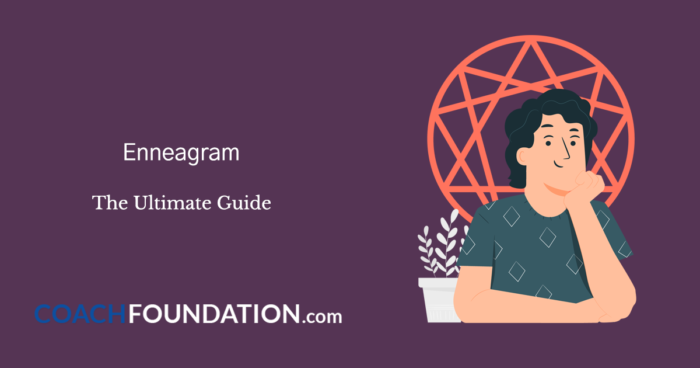




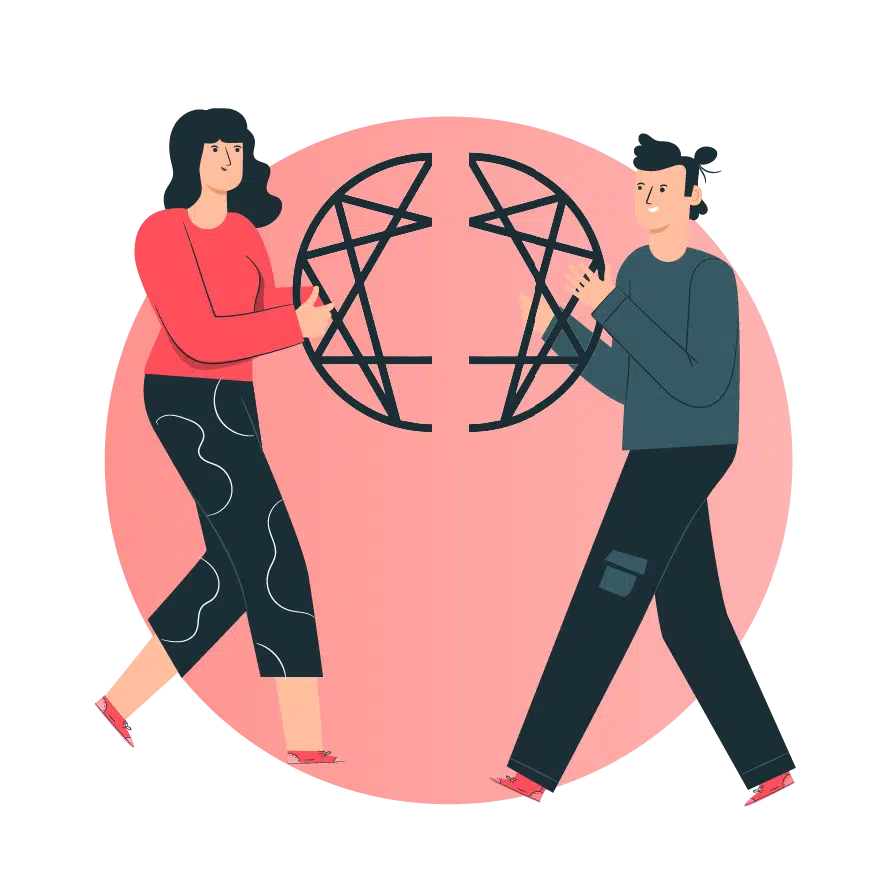


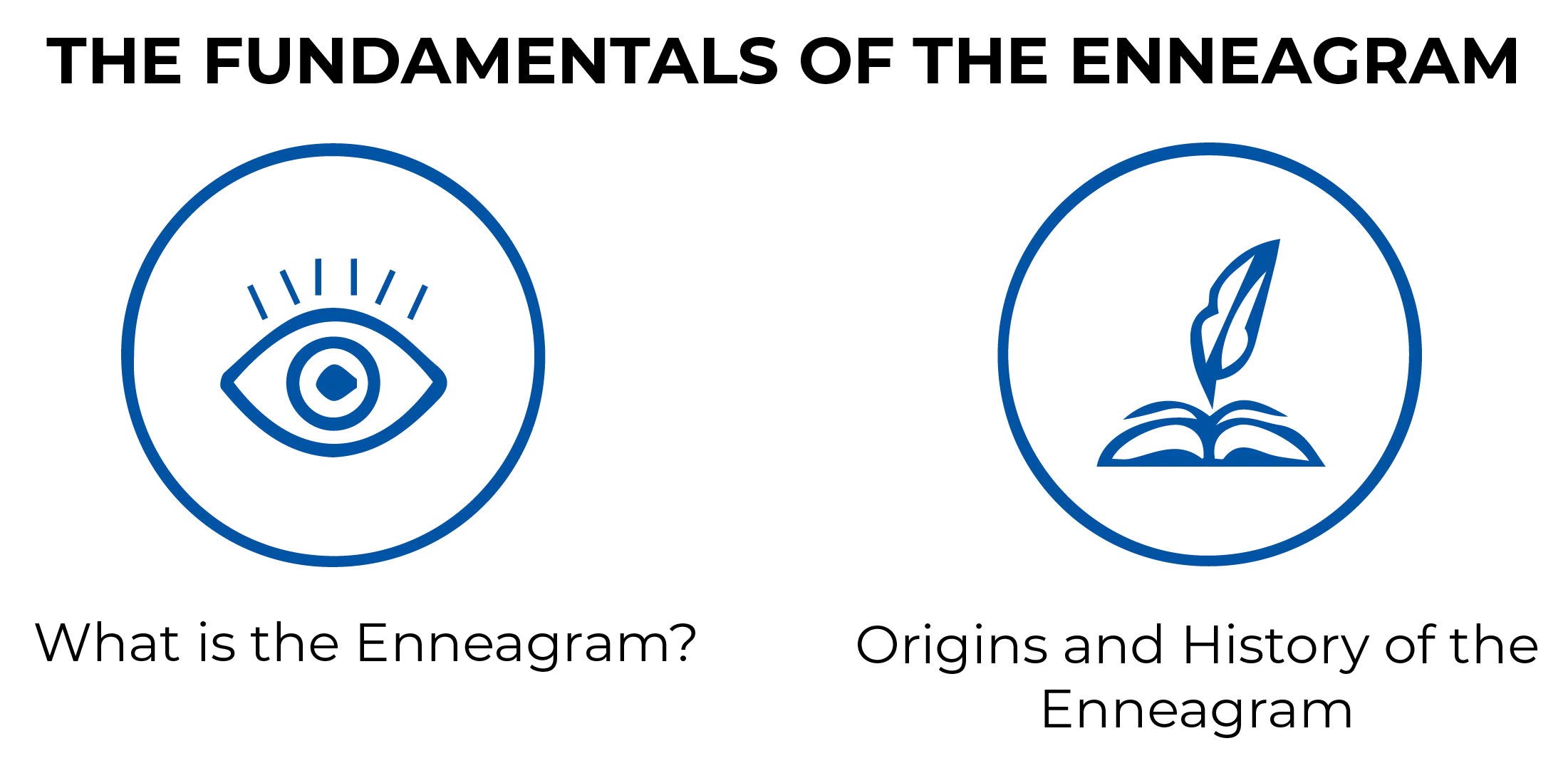
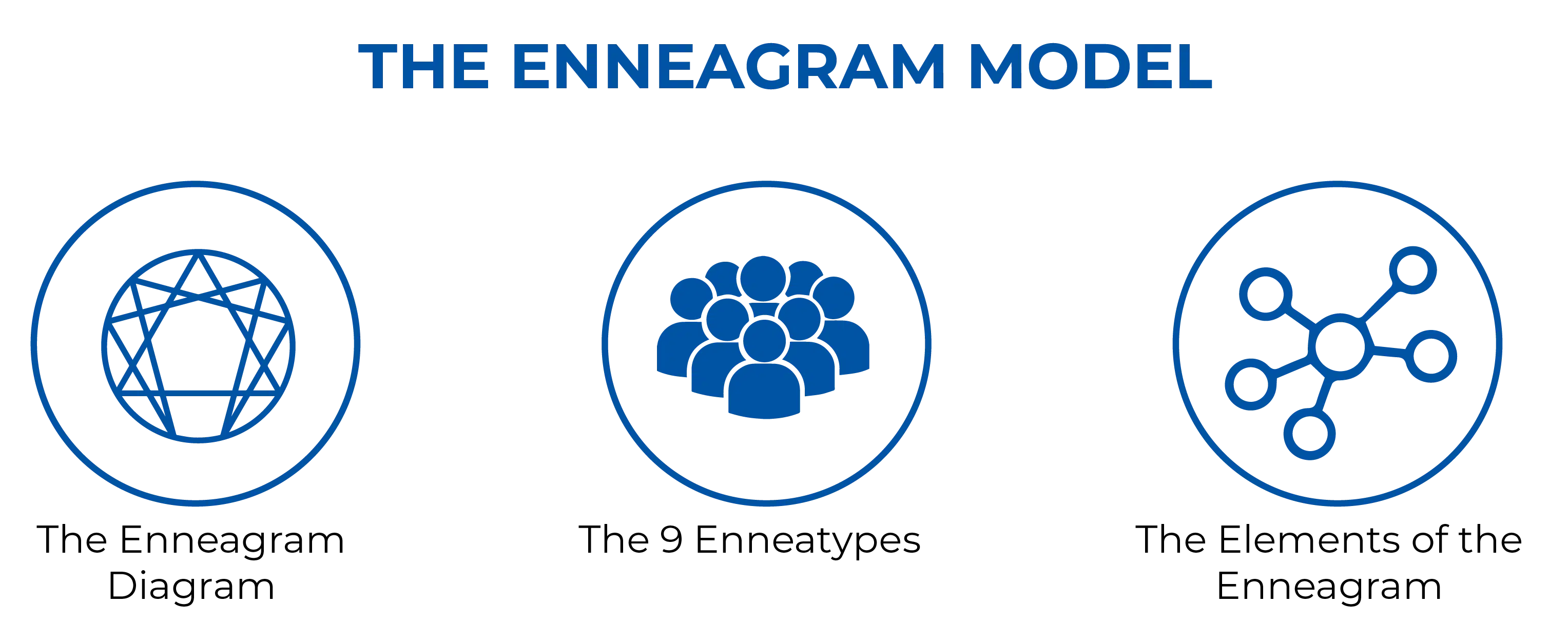
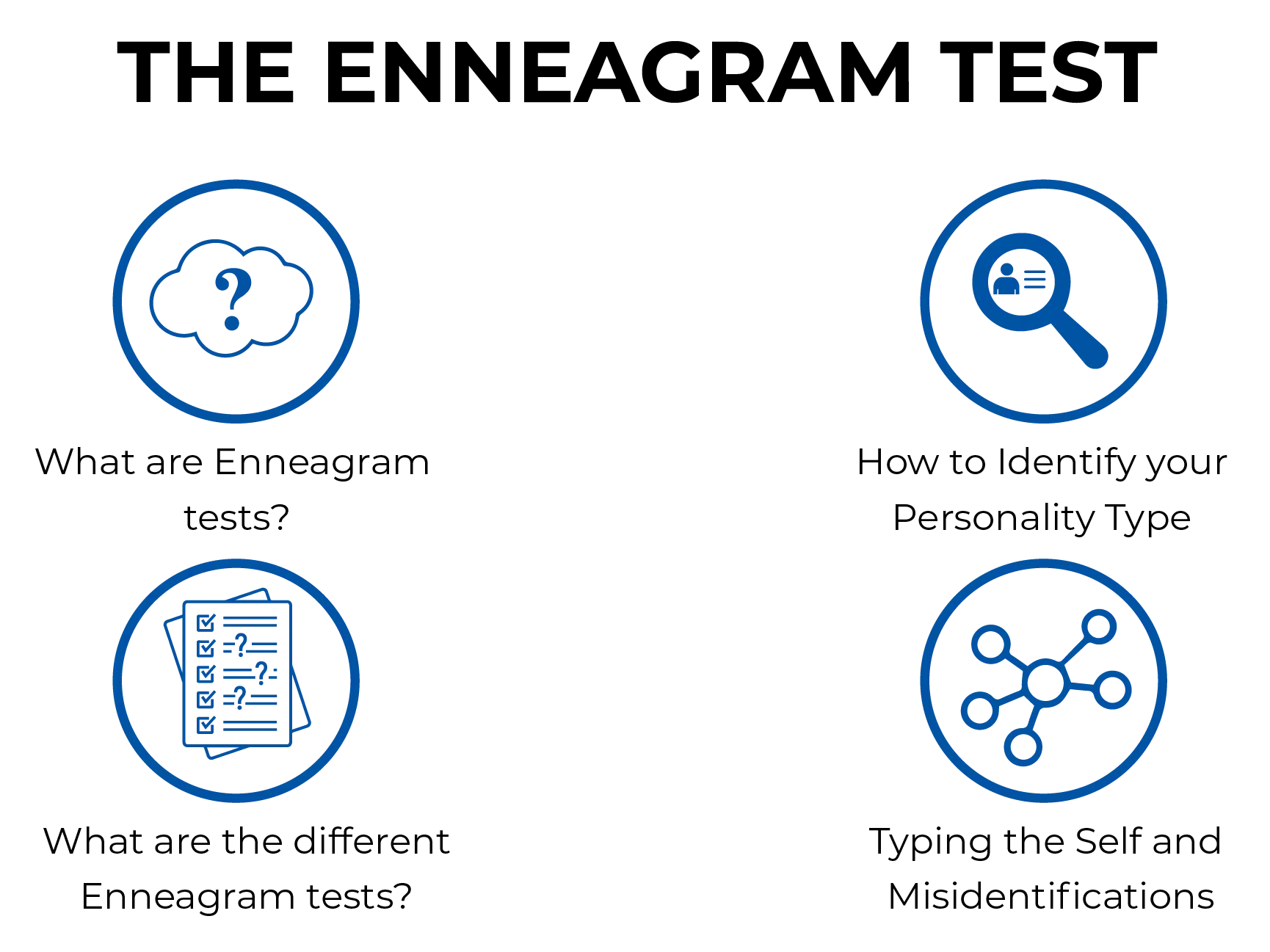
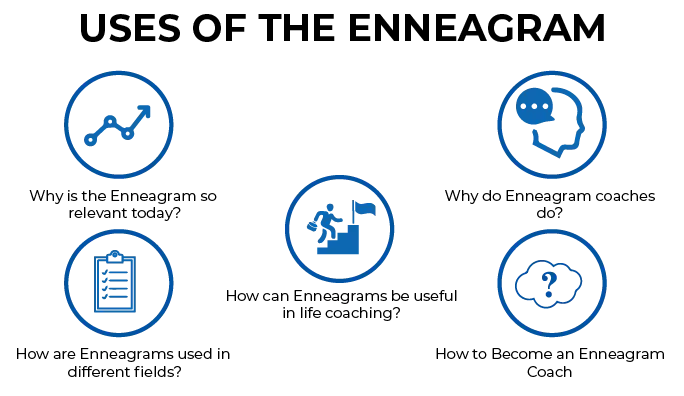
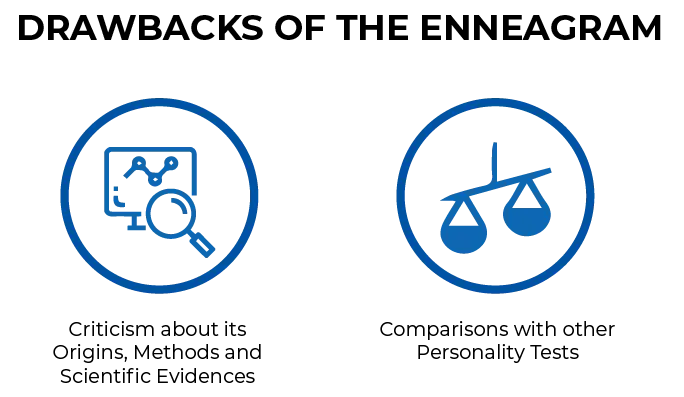






Truly informative. Thanks Sai.
I love how detailed all these images are. Really enriches the content. Thank you.
I now know exactly what Enneatype I am. This is so useful for better understanding of myself.
I belong to the helper type and my daughter belongs to the enthusiast type. Understanding this helped me get such insight to all our problems. Thank you Sai.
I wish I had learned all this a lot sooner in life. This is eye-opening for me. Extremely grateful to you.
People should teach this to everyone at a very young age. Very much needed for everyone to handle themselves better
Knowing that in the feeling center, the dominant emotion is shame would really help a lot of people deal through guilt and shape. I myself would have been a different person if I had known this sooner.
Once you categorize everyone around you into the Enneatype they are, everything starts to make sense. Thank you for making my life easier.
As a life-coach, I thought of so many ways to use Enneagram in my profession. Thanks sai!
Now I know how to be the best version of myself because of you, Sai. Thanks a lot.
I seriously can not find a flaw in this article. The content, the explanation, the flow of topics, descriptive images, everything is absolutely flawless. I am a graphic designer, and today I learned more than just enneagram.
As I was going through the Enneatypes, it was very easy for me to associate the types to famous leaders. The accuracy of the traits mentioned here to the famous personalities I thought of is immaculate. You have a great job!
Using enneagram in psychotherapy would be such a game-changer move. You have done an amazing job.
I love every content you post. You always have a way of making everyone be engaged throughout the articles. Everything is so structured. You really are the best. I love coming back and reading your blogs. Thank you
You have a way with words. You make even the toughest subject matter seem so easy. Thank you.
Your posts are always well-written and easy to understand.